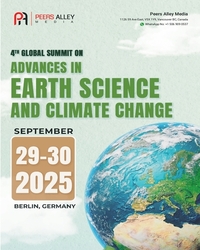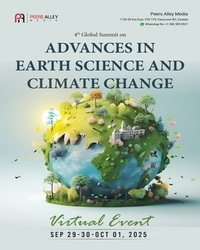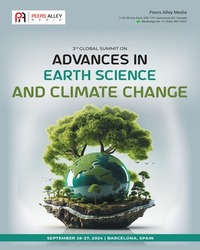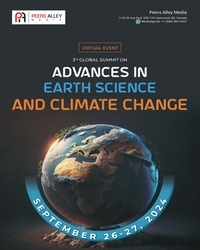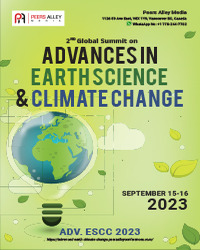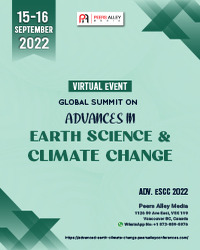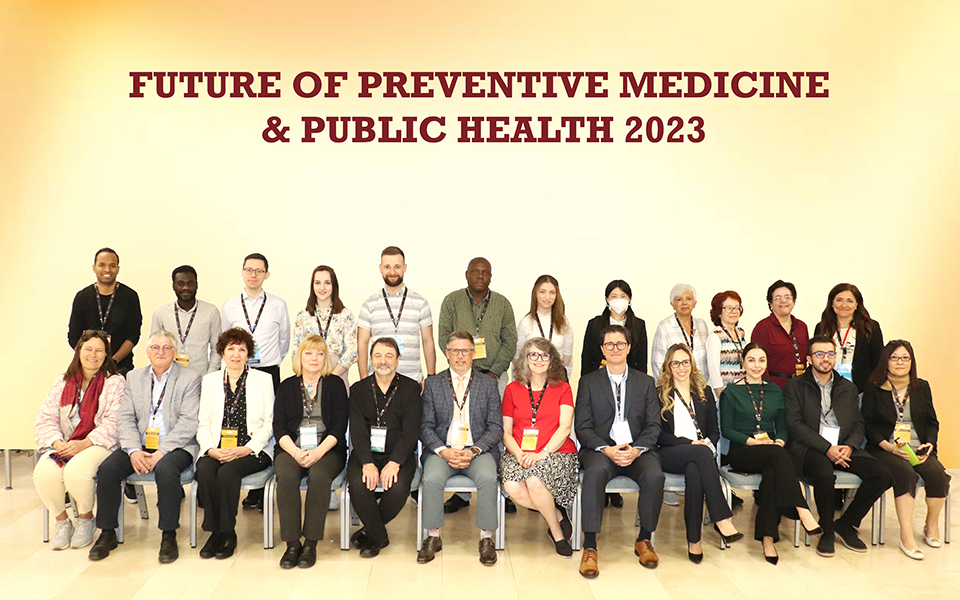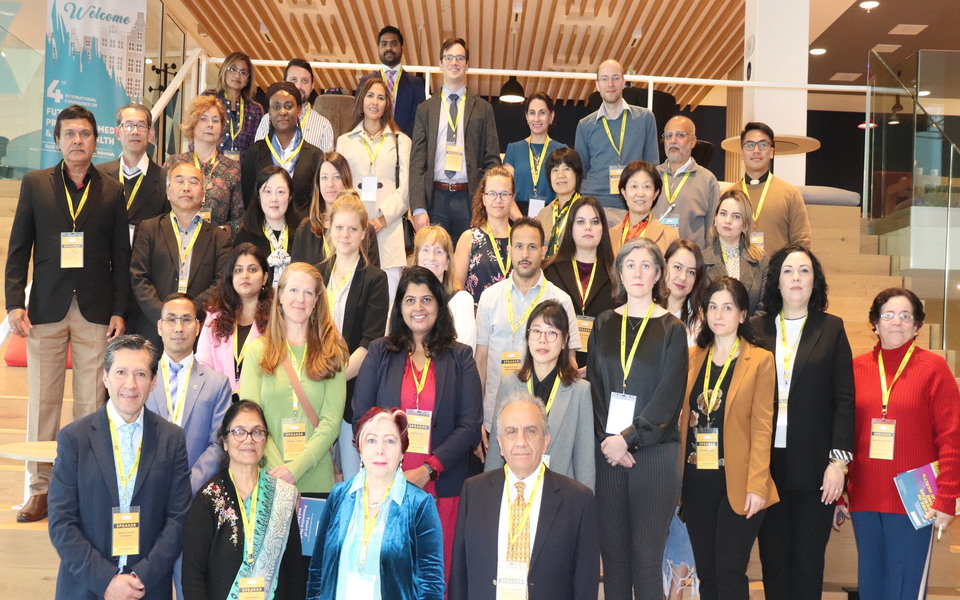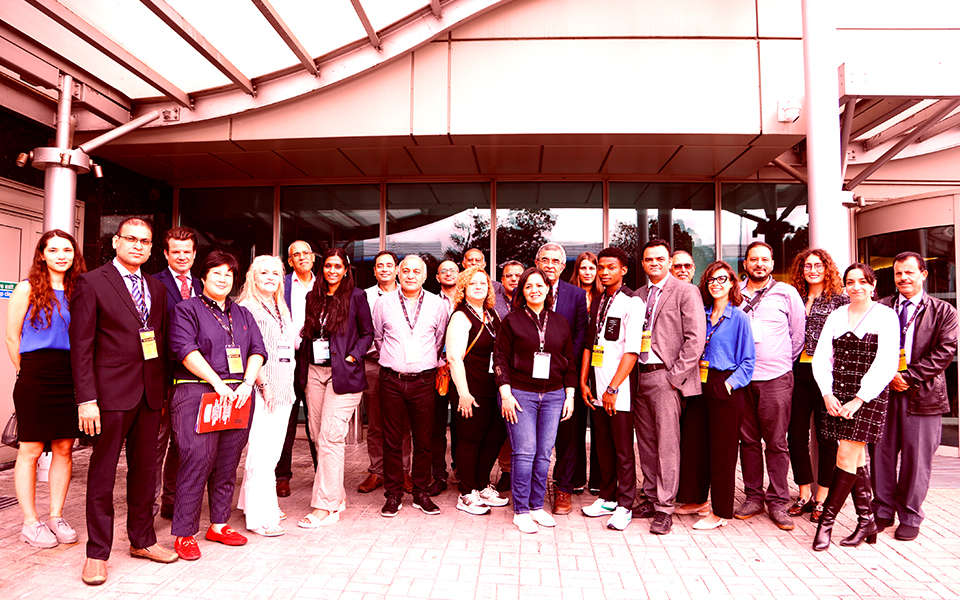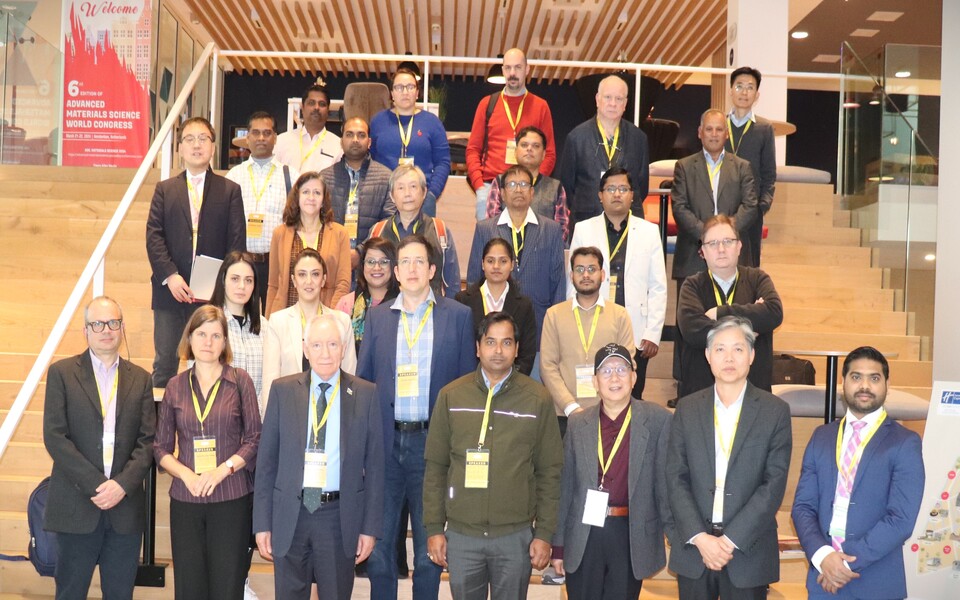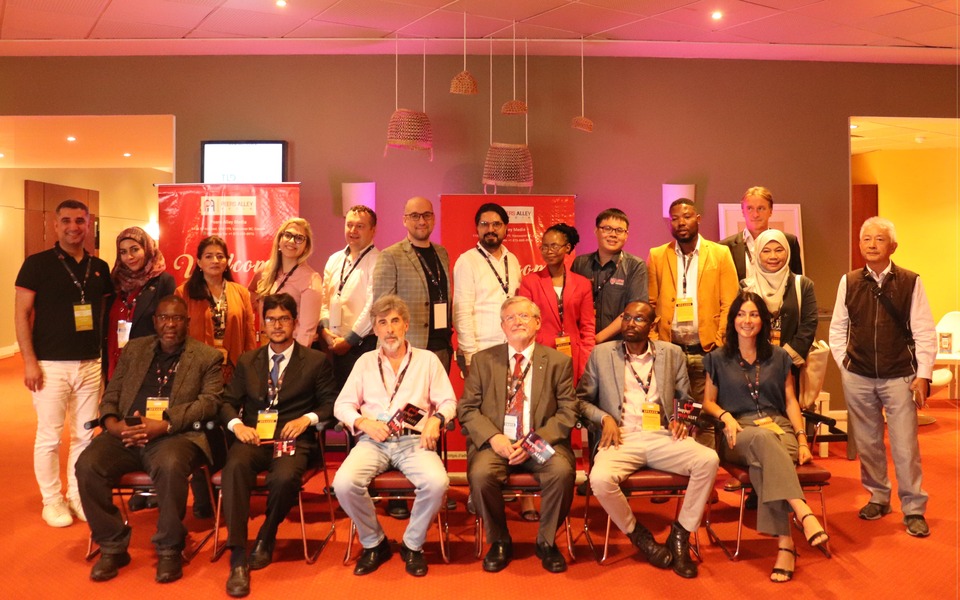
Future Of BSBE 2024
Peers Alley Media,Canada

Primary goal of attending an international conference is to present a paper to the experts and influencers. It gives you a platform to exchange your interest-related thoughts, paving the way for possible future collaborations.

Use this platform to build connections with an elite group of wise men and women to enhance your intellect. Young entrepreneurs, this is a great platform to connect with your peers.

Knowledge is Power. Knowledge teaches skills. Skills define excellence. Use this platform to become cognizant of your interest area to achieve excellence in your domain.

Attending a conference give you opportunity to get your abstract or paper published in conference proceedings

Meet and greet a myriad of industry professionals and academia experts with common interest. Every meal will be an opportunity to meet and interact with fellow researchers, attendees and experts.

Expand your professional competency and learn useful tips and tricks of your industry in our skill-building workshops.

Explore insights on recent advancements, new equipment, new techniques, and unpublished data, learn from thought-leaders and get to network with a great line up of speakers.

Our exhibits floor offers the attendees with a dynamic display of the latest products with cutting-edge technology.

Investing in you is the best investment. Peers Alley conferences give the patrons with a feeling of the serendipity of real learning, skill development in strategic workshops, networking and start-up opportunities, thus, is value for money.

Attending the conference gives you much needed break from your regular duties. It also allows you to explore new cities, culture and meet new people. You will feel energized and rejuvenated to return to the university and continue with the job after attending the conference.
Conferences are vital forum for academic researchers and business leaders. "It involves multiple presentations, interactive breakout sessions, hands-on product demonstrations and unrivalled networking opportunities".
We have invited some of the world's most sought-after keynote speakers, experts, brand ambassadors, and industry leaders to share their thoughts and ideas with our conference guests.
Register Now
The world is currently facing a multitude of pressing environmental crises that threaten both human well-being and the planet’s ecological balance. Climate change, global warming, deforestation, freshwater depletion, and air and water pollution are intensifying at unprecedented rates, driven largely by unsustainable industrial growth and urban expansion. According to recent United Nations estimates, developing nations require nearly $70 billion annually to meet immediate climate adaptation needs—a figure expected to surge to $140–$300 billion by 2030 as environmental pressures intensify.
The economic risks associated with climate change are equally alarming. Studies suggest that, without decisive global action, climate change could shrink the world’s GDP by up to 18% by 2050, primarily due to extreme weather events, resource scarcity, and disrupted supply chains. These impacts will disproportionately affect low-income and vulnerable communities, deepening inequalities and threatening global stability. Addressing these challenges demands urgent, coordinated efforts focused on sustainable development, clean energy transitions, and climate-resilient infrastructure to safeguard both people and the planet’s future.
-------------------------------------------------------------------------------
Earth Science and Climate Change Proceedings 
about Adv. ESCC 2026 conference

Dear Colleagues,
I am delighted to welcome you to the 5th Global Summit on Advances in Earth Science and Climate Change (Adv. ESCC 2026), taking place on September 24-25, 2026, in London, UK.
From September 29 to October 1, 2025, I had the opportunity to participate in the 4th Global Summit on Earth Science and Climate Change, which provided me with a new academic experience and insight into the potential for globalization.
Over the three-day event, hundreds of presenters shared new research findings and opinions across a wide range of issues through in-person presentations, virtual sessions, and poster presentations. TO read more click here
Best wishes,
Prof. Cherl-Ho Lee
Korea Food Security Researh Institute, Korea University, Korea

Dear Esteemed Participants,
With great pleasure I welcome you to the 5th Global Summit on Advances in Earth Science and Climate Change, to be held from September 24–25, 2026 in London, UK.
My recent studies have dealt with climate change mitigation and higher education institutions’ roles in this. I am also broadly and generally interested in science related to the topic. With these expectations I participated in the 2025 summit in Berlin where I held an invited speech. I must say that I was very delighted by the experience. The atmosphere in the Berlin seminar was intellectual and inviting.
I am a social scientist and found the discussions with scientists from other disciplinary fields very useful. Read more via click here
Best Regards,
Prof., Dr. Jouni Kekäle
Chief Senior Specialist, University of Eastern Finland, Finland

Dear Esteemed Colleagues and Friends,
I’m truly delighted to welcome you to the 5th Global Summit on Advances in Earth Science and Climate Change, taking place on September 24–25, 2026, in the lively and inspiring city of London, UK.
The central theme of this year’s conference, “Transforming Earth’s Future: Integrating Science, Climate Intelligence, and Innovation for Global Resilience” reflects our shared commitment to advancing.. Read more via click here

Dear Esteemed Colleagues,
It is my distinct pleasure to extend my warm greetings to all participants of the 5th Global Summit on Advances in Earth Science and Climate Change (Adv. ESCC 2026), to be held on September 24–25, 2026, in London, UK. Read more via click here

Pepperdine University, USA

East Tennessee State University, USA

Sorbonne Paris Nord University, France

Montclair State University, USA


Research on agriculture and food Security aims to provide insight that can assist in developing more sustainable agriculture and food systems that can better solve local, regional, national, and/or global food and nutritional insecurity. Food security exists when all people have physical, social, and economic access to sufficient, safe, and nutritious food to fulfill their dietary needs and food preferences for an active and healthy life at all times. Food security is determined by three factors: food availability, accessibility, and consumption. Household resources, discretionary income, and socioeconomic level all play a role in food security. It is also inextricably tied to other issues including food costs, global climate change, water, energy, and agricultural expansion. Physical (temperature, soil quality, and gradient) and human (technology) elements have historically influenced the amount and type of food produced in any given location.
Sub-tracks :
Tags
Climate Change Conferences 2026 Europe
Climate Change Conferences
Earth Science Conferences 2026 Europe
Geology Conferences
Earth Science Conferences
Environmental Science Conferences
Soil Science Conferences
Climate Science Conferences
Earth Science Conferences 2026
Ecology Conferences
Recycling Conferences

Atmospheric chemistry is a field of atmospheric science that studies the chemical reactions that take place within the Earth's atmosphere. It focuses on the composition of planetary atmospheres, as well as the reactions and interactions that power these complex and dynamic systems. Improved understanding of climatic forcing, air qualit, and reciprocal interactions between the atmosphere and biosphere necessitates more research in this field. Due to breakthroughs in fundamental understanding of atmospheric chemical processes, new innovations in both in situ and remote sensing measurement technology, and improved representations of important processes in numerical models, the subject is quickly evolving. Increasing energy demands, expanding industrial activity, and intensifying agricultural activities around the world have all resulted in changes in emissions, altering the composition of the atmosphere. These shifts have created significant issues for society, including negative effects on climate, human health, and ecological health. Understanding and responding to these concerns requires atmospheric chemistry research. Atmospheric chemists try to figure out what's causing these issues so that alternative solutions may be explored and the effects of changes in government policy can be assessed.
Sub-tracks :
Tags
Climate Science Conferences
Ecology Conferences
Earth Science Conferences 2026 Asia
Climate Change Conferences 2026
Earth Science Conferences
Climate Change Conferences
Environmental Science Conferences
Green Energy Conferences

Biogeochemistry has evolved as a scientific study as we've realised that our current human effect on our world may disrupt the stable chemistry of our evolutionary environment, which is at least partially dictated by the diversity of organisms that share our planet with us. Biogeochemistry, in particular, is the study of biogeochemical cycles, which are the cycles of chemical elements like carbon and nitrogen, and their interactions with and integration into living things as they travel across earth scale biological systems in space and time. Chemical cycles that are either driven by or influence biological activity are the focus of this field. The study of the carbon, nitrogen, sulphur, iron, and phosphorus cycles is given special attention. Biogeochemistry is a branch of systems ecology that is closely related to biogeochemistry. Biogeochemistry is a means of looking at how the Earth's systems interact with one another (water, atmosphere, land, and living organisms).
Sub-tracks :
Tags
Environmental Science Conferences
Recycling Conferences
Ecology Conferences
Climate Change Conferences 2026
Earth Science Conferences 2026 Europe
Climate Change Conferences 2026 Europe
Climate Change Conferences
Earth Science Conferences
Climate Science Conferences

A long-term shift in global or regional climate patterns is referred to as climate change. Climate change now encompasses both human-caused global warming and its effects on Earth's weather patterns. Emissions of greenhouse gases, mostly carbon dioxide (CO2) and methane, are the primary reason. The majority of these emissions are caused by the burning of fossil fuels for energy. Additional sources include agriculture, steelmaking, cement production, and forest loss. These factors, taken together, accelerate global warming. Weather patterns may become less predictable as a result of climate change. Because projected temperature and rainfall levels can no longer be relied upon, these unpredictable weather patterns might make it difficult to maintain and develop crops in farming-dependent regions. Natural factors like as volcanic eruptions, ocean currents, Earth's orbital fluctuations, solar variations, and internal variability all impact and change the planet's temperature. Things we rely on and cherish, such as water, electricity, transportation, wildlife, agriculture, ecosystems, and human health, are all being impacted by climate change.
Sub-tracks :
Tags
Climate Change Conferences
Climate Change Conferences 2026 Europe
Earth Science Conferences 2026 Asia
Ecology Conferences
Climate Change Conferences 2026
Environmental Science Conferences
Soil Science Conferences
Geology Conferences
Earth Science Conferences 2026

The study of the Earth's structure, qualities, processes, and four and a half billion years of biotic development is known as Earth science. The terms "earth science" and "atmospheric science," "hydrology," and "oceanography" or "ocean sciences" are frequently used interchangeably. Understanding these occurrences is critical to the survival of life on Earth. The goal of this research domain is to improve our understanding of the Earth's changing environments and the natural distribution of mineral, water, biota, and energy resources, as well as to develop methods for predicting and mitigating the effects of geologic hazards like earthquakes, volcanic eruptions, floods, and landslides. Earth scientists' knowledge of the structure and chemical makeup of the earth's crust, as well as the services they provide, assist us in locating resources that sustain and improve quality of life. Understanding the pressures in the crust and natural processes on the surface allows us to predict natural disasters such as volcanoes and earthquakes, as well as geologic situations such as destructive mining practices or incorrect waste disposal. Finally, a broad understanding of planetary physics will enable humans to predict large changes in global environmental conditions and manage or adapt to them.
Sub-tracks :
Tags
Climate Change Conferences 2026 Europe
Climate Science Conferences
Recycling Conferences
Earth Science Conferences 2026 Europe
Climate Change Conferences 2026
Soil Science Conferences
Environmental Science Conferences
Climate Change Conferences
Earth Science Conferences 2026

Ecology is the study of the interactions between living organisms, such as humans, and their physical environment; it aims to comprehend the vital links that exist between plants and animals and the environment. Ecology also informs us about ecosystem advantages and how humans might use Earth's resources in ways that preserve the environment for future generations. Conservation biology, wetland management, natural resource management (agroecology, agriculture, forestry, agroforestry, fisheries), city planning (urban ecology), community health, economics, basic and applied science, and human social interaction are all examples of practical applications of ecology (human ecology). Ecosystems provide ecosystem services such as biomass production (food, fuel, fibre, and medicine), climate regulation, global biogeochemical cycles, water filtration, soil formation, erosion control, flood protection, and many other scientific, historical, economic, or intrinsically valuable natural features. Ecology can be studied in a variety of ways. Landscape ecology, population ecology, and behavioral ecology are some examples.
Sub-tracks :
Tags
Earth Science Conferences
Green Energy Conferences
Earth Science Conferences 2026 Asia
Climate Change Conferences 2026
Climate Change Conferences 2026 Europe
Remote Sensing Conferences
Soil Science Conferences
Earth Science Conferences 2026
Recycling Conferences
Climate Change Conferences
Geology Conferences
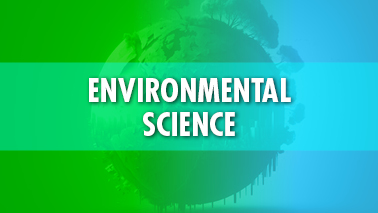
Environmental science is an interdisciplinary academic area that studies the environment and solves environmental problems by combining physical, biological, and information sciences. Environmental science combines the subjects of ecology, biology, zoology, oceanography, atmospheric science, soil science, geology, chemistry, and others in an interdisciplinary study of how natural and human-made processes interact and affect Earth's diverse biomes. Environmental engineering is concerned with the use of design and technology to improve the condition of the environment in all aspects. Understanding earth processes, analysing alternative energy sources, pollution control and mitigation, natural resource management, and the consequences of global warming and climate change are among the topics studied by environmental scientists. Environmental scientists analyses environmental issues from a systems perspective. An environmental scientist, on the other hand, would aim to comprehend climate change by quantifying its consequences with models and analyzing mitigation options, and an environmental studies researcher would focus on the economic and political components of international climate-change protocols.
Sub-tracks :
Tags
Recycling Conferences
Green Energy Conferences
Earth Science Conferences 2026 Asia
Environmental Science Conferences
Geology Conferences
Remote Sensing Conferences
Earth Science Conferences 2026
Climate Science Conferences
Soil Science Conferences
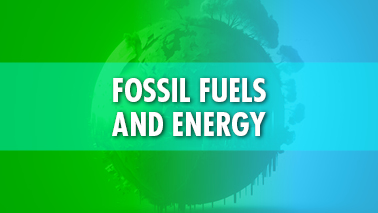
Plants and animals decompose to produce fossil fuels. These fuels, which can be found in the Earth's crust and contain carbon and hydrogen, can be burned to generate energy. Fossil fuels include coal, oil, and natural gas. Coal is a substance found in sedimentary rock deposits, which are made up of layers of rock and dead plant and animal waste. Oil was discovered as a solid material between layers of sedimentary rock, such as shale, at first. Natural gas is typically discovered atop oil deposits in pockets. It can also be found in non-oil-bearing sedimentary rock layers. The anaerobic decomposition of buried dead organisms is the primary source of fossil fuels. Fossil fuels have been powering economies for nearly 150 years, and they now account for around 80% of global energy. When fossil fuels are burned, the carbon and other greenhouse gases that have been stored in the atmosphere are released into the atmosphere. The accumulation of greenhouse gases in the atmosphere has resulted in significant changes in the Earth's climate.
Sub-tracks:
Tags
Climate Change Conferences
Earth Science Conferences 2026
Climate Change Conferences 2026 Europe
Soil Science Conferences
Earth Science Conferences
Environmental Science Conferences
Ecology Conferences
Earth Science Conferences 2026 Europe
Green Energy Conferences
Recycling Conferences

The study of the processes that influence the amount, composition, and distribution of chemical compounds and isotopes in geologic environments is known as geochemistry. This field of Earth Science uses chemical concepts to gain a better knowledge of the Earth's and other planets' systems. Geochemists believe that the Earth is made up of separate spheres – rocks, fluids, gases, and biological — that exchange mass and energy over time. The basis for studying the co-evolution of the solid Earth, its oceans, atmosphere, biosphere, and climate is an understanding of reaction rates and the spectrum of physical variables responsible for chemical expressions of each sphere. The study of chemical transformations of biological components in rocks, as well as the cyclic flow of individual elements (and their compounds) between living and nonliving systems are all part of modern geochemical research. Certain areas of geochemical research, such as the origin and relative abundance of elements in the solar system, the Milky Way Galaxy, and the universe as a whole; the chemical composition of meteorites; and the ages of terrestrial and lunar rocks, have become intertwined with cosmology since the 1960s.
Sub-tracks:
Tags
Climate Change Conferences
Green Energy Conferences
Earth Science Conferences
Soil Science Conferences
Ecology Conferences
Earth Science Conferences 2026
Recycling Conferences
Earth Science Conferences 2026 Europe
Climate Change Conferences 2026 Europe
Remote Sensing Conferences
Climate Change Conferences 2026
Geology Conferences

Geology is the study of the Earth, its materials, the structure of those materials, and the processes that affect them. It encompasses the study of species that have lived on our planet in the past. The study of how Earth's materials, structures, processes, and species have changed over time is an essential element of geology. We can learn about how the Earth has evolved over time by examining rocks, geochemistry, and geobiology. We can also predict how the planet will alter in the future. Modern geology is considered a major component of Earth system science and planetary science as a whole. People are at risk from a variety of processes, including landslides, earthquakes, floods, and volcanic eruptions. Geologists strive to have a thorough understanding of these processes so that major structures are not built in potentially hazardous areas. Geologists perform research to find important metal-bearing rocks, plan mines to generate them, and devise means to extract the metals from the rocks. They find and produce oil, natural gas, and groundwater in a similar way. Climate change is a major concern nowadays. Many geologists are trying to figure out what Earth's historical climates were like and how they changed over time. This historical geology news is useful in determining how our current climate is evolving and what the consequences may be.
Sub-tracks:
Tags
Earth Science Conferences 2026
Soil Science Conferences
Earth Science Conferences
Remote Sensing Conferences
Earth Science Conferences 2026 Europe
Earth Science Conferences 2026 Asia
Climate Change Conferences 2026
Climate Science Conferences
Geology Conferences
Green Energy Conferences

Green energy refers to any form of energy that is produced from natural resources such as sunshine, wind, or water. Green energy is often derived from renewable energy technologies such as solar, wind, geothermal, biomass, and hydroelectric power as a source of energy. Each of these technologies generates energy in a different way, whether it's through harnessing the sun's energy using solar panels, wind turbines, or the flow of water. Green energy is beneficial to the environment because it substitutes more ecologically friendly options for the negative consequences of fossil fuels. Natural sources of green energy include sun, wind, rain, tides, plants, algae, and geothermal heat. These energy resources are renewable, meaning they can be regenerated in the nature. Fossil fuels, on the other hand, are a limited resource that takes millions of years to produce and will diminish as they are consumed. Renewable energy sources are also less harmful to the environment than fossil fuels, which produce greenhouse gases as a byproduct and contribute to climate change. To get fossil fuels, one must frequently mine or drill deep into the ground, often in ecologically sensitive locations. Green energy, on the other hand, uses readily available energy sources all over the world, especially in rural and remote areas where electricity is scarce. Green energy may be utilized to replace fossil fuels in a variety of applications, including power generation, water heating, home appliances, and automotive fuel.
Sub-tracks:
Tags
Earth Science Conferences 2026
Geology Conferences
Earth Science Conferences
Earth Science Conferences 2026 Asia
Climate Change Conferences
Ecology Conferences
Green Energy Conferences
Climate Change Conferences 2026 Europe
Recycling Conferences
Remote Sensing Conferences
Environmental Science Conferences

Petrology is the science of rocks, including igneous, metamorphic, and sedimentary rocks, as well as the processes that shape and modify them. It's a branch of geology that focuses on chemical analysis in areas like petrography and mineralogy. Modern petrologists can determine the origins of rocks and their chemical features by combining numerous geophysical and geochemical approaches. Petrology is divided into three sections based on the primary rock types: sedimentary, igneous, and metamorphic. Petrology is crucial for determining the physical and chemical composition of rocks, as well as the various factors that impact their creation. Modern petrologists use mineralogy knowledge to aid in the mapping and sampling of rocks. Because most rocks are made up of minerals and developed under similar conditions, petrology significantly relies on mineralogy ideas and procedures. Understanding the nature of the earth's crust and mantle requires a lot of petrological research. These geological processes are crucial in evaluating whether a given location is suitable for agriculture, industry, or commerce. Petrology applies in many fields that directly affect our life, in addition to helping us comprehend the history of our planet's development. Petrology is a branch of science that assists us in determining the best raw materials to employ in industries for the production of goods. Petrology also advocates optimal practises that enhance sustainability and technological growth.
Sub-tracks:
Tags
Climate Change Conferences
Climate Change Conferences 2026
Earth Science Conferences
Green Energy Conferences
Geology Conferences
Earth Science Conferences 2026 Asia
Environmental Science Conferences
Remote Sensing Conferences
Ecology Conferences
Soil Science Conferences

Plant science refers to a wide spectrum of study and scientific studies that look at the estimated 410,000 land plant species on the planet. Plant science is the study of how plants are utilised to provide food, change the environment, restore damaged landscapes, promote human health and well-being, improve communal surroundings, and provide recreational and practical benefits to the general public. Plant science and biotechnology offers opportunities in a wide range of disciplines that are essential to understanding plants and their interactions with other species, as well as opportunities to specialize in plant biotechnology. Forests and allied plant systems are the focus. Plant community dynamics as influenced by humans and the environment; mechanisms of plant succession; epidemiology of forest and urban tree diseases; taxonomy, physiology, growth, photosynthesis, plant reproductive biology, genetic engineering, plant-pathogen interactions, tissue culture, and ancient DNA research are all current research interests.
Sub-tracks:
Plant Biotechnology
Agronomy and Agricultural Research
Plant Ecology and Plant Taxonomy
Horticulture& Landscaping
Plant tissue culture
Agricultural Microbiology
Phytochemical Analysis
Plant breeding and Genetics
Organic Farming
GMO and GM Crop
Plant Biotechnology and Applications
Plant Molecular Biology
Plant Nutrition
Soil and Crop Sciences
Plant Physiology and Eco Physiology
Plant - Biotic Interactions
Seed Science and Technology
Biodiversity and Plant Ecology
Plant Nutrition and Soil Sciences
Forest Science And Technology
Tags
Climate Change Conferences 2026
Environmental Science Conferences
Recycling Conferences
Geology Conferences
Climate Change Conferences
Climate Science Conferences
Green Energy Conferences
Earth Science Conferences 2026
Earth Science Conferences
Earth Science Conferences 2026 Asia
Climate Change Conferences 2026 Europe

The term "renewable energy source" refers to energy that is both sustainable and infinite, such as the sun. When the word "alternative energy" is used, it usually refers to renewable energy sources as well. It refers to energy sources that are not as non-sustainable as the most regularly utilized non-sustainable sources, such as coal. Renewable energy comes from naturally renewing but flow-limited sources; renewable resources are nearly limitless in terms of length but have a finite amount of energy per unit of time. Renewable energy, often known as clean energy, is derived from natural sources or processes that are renewed on a regular basis. Sunlight and wind, for example, continue to shine and blow despite the fact that their availability is dependent on time and weather. While harnessing nature's power is typically considered of as a novel technology, it has long been used for heating, transportation, lighting, and other purposes. Solar energy comes from the sun, geothermal energy comes from the earth's heat, wind energy comes from the wind, biomass comes from plants, and hydropower comes from flowing water.
Sub-tracks:
Tags
Environmental Science Conferences
Geology Conferences
Climate Change Conferences
Earth Science Conferences 2026 Asia
Green Energy Conferences
Climate Science Conferences
Soil Science Conferences
Earth Science Conferences 2026

It can be defined as the collection, transportation, and disposal of garbage, sewage, and other waste products in its most basic form. Waste management entails the treatment of both solid and liquid waste. It also provides a variety of options for recycling goods that aren't classified as garbage during the process. The processes and actions necessary to manage trash from its inception to its final disposal are referred to as waste management or waste disposal. This comprises waste collection, transportation, treatment, and disposal, as well as waste management process monitoring and control, as well as waste-related laws, technologies, and economic systems. Waste can be solid, liquid, or gaseous, with various disposal and management strategies for each. Industrial, biological, residential, municipal, organic, biomedical, and radioactive wastes are all dealt with via waste management. Waste can, in some situations, be harmful to human health. Throughout the entire waste management process, there are health concerns. Health problems can occur in a variety of ways, both indirectly and directly. Directly, through solid waste management, and indirectly, through water, soil, and food use. Plastic, paper, glass, metal, and organic garbage are some of the different types of waste. Radioactive, flammable, infectious, toxic, or non-toxic wastes may be classified according to their hazard potential. In any civilization, solid waste management is a necessary service. Solid waste is generated in a specific region as a result of industrial, residential, and commercial activity, and it can be treated in a variety of ways. Solid waste, regardless of its source, substance, or hazard potential, must be managed in a methodical manner to ensure environmental best practices. Because solid waste management is such an important part of environmental hygiene, it must be included in environmental planning.
Sub-tracks:
Tags
Climate Science Conferences
Ecology Conferences
Climate Change Conferences 2026 Europe
Green Energy Conferences
Earth Science Conferences 2026 Asia
Climate Change Conferences
Earth Science Conferences 2026
Recycling Conferences
Earth Science Conferences
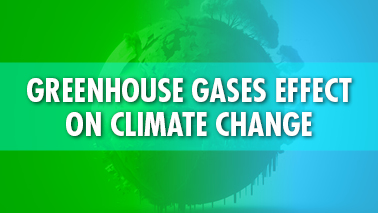
Since the mid-twentieth century, human-caused greenhouse gases have been the most dominant driver of observed climate change. The greenhouse effect describes how "greenhouse gases" trap heat at the Earth's surface. Greenhouse gases come from both natural and man-made sources. Carbon dioxide, methane, nitrous oxides, and water vapour are examples of greenhouse gases. The greenhouse effect allows life to exist on Earth. Without it, the average temperature on Earth's surface would be roughly -19°C, rather than the current 14°C. However, increasing greenhouse gas levels, on the other hand, causes significant climate changes such as floods, droughts, and heat. As greenhouse gas emissions from human activities increase, they build up in the atmosphere and warm the climate, leading to many other changes around the world—in the atmosphere, on land, and in the oceans. As human-caused greenhouse gas emissions rise, they accumulate in the atmosphere and warm the climate, causing a slew of additional changes in the atmosphere, on land, and in the oceans. The majority of the focus has been on carbon dioxide emissions caused by fossil-fuel combustion and deforestation. Other greenhouse gases, such as methane from rice farming, cattle, landfills, and other sources, and chlorofluorocarbons from industrial sources, are also released as a result of human activity. Human cultures and communities have often been profoundly affected by climatic change. Abrupt climatic transitions are a major source of concern for society, as future adjustments may be so sudden and drastic that agricultural, ecological, industrial, and commercial systems will be unable to respond and adapt.
Tags
Earth Science Conferences 2026 Asia
Geology Conferences
Earth Science Conferences
Ecology Conferences
Remote Sensing Conferences
Climate Change Conferences
Soil Science Conferences
Climate Change Conferences 2026
Environmental Science Conferences
Recycling Conferences
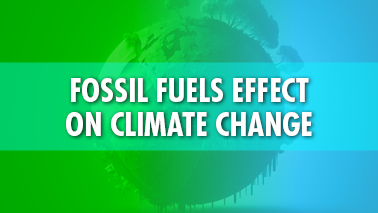
The decay of buried carbon-based organisms that died millions of years ago produces fossil fuels. They produce carbon-rich deposits, which are mined and burned for energy. They are non-renewable and currently provide roughly 80% of global energy. Coal, oil, and gas are the three forms of fossil fuels. For decades, fossil fuels have provided energy to a wide range of human activities. Electricity generation, home heating, transportation fuel, and polymers are all examples of uses for fossil fuels. The use of fossil fuels is the principal driver of contemporary climate change, which is disrupting Earth's ecosystems and posing health risks to humans and the environment. When fossil fuels are burned, massive volumes of carbon dioxide, a greenhouse gas, are released into the atmosphere. Global warming is caused by greenhouse gases, which trap heat in our atmosphere. Coal is the single major contributor to global warming. Natural gas is frequently advertised as a more environmentally friendly energy source than coal and oil. It is, however, still a fossil fuel, accounting for a fifth of global carbon emissions. Fossil fuel emissions are the primary cause of global warming. About 65 percent of the extra mortality rate due to air pollution is linked to fossil-fuel-related emissions, and 70 percent of the climate cooling caused by anthropogenic aerosols is attributable to fossil-fuel-related emissions. To keep global warming from worsening, about 60% of oil and gas reserves and 90% of coal reserves must remain in the ground. According to scientists, about 60% of oil and gas reserves and 90% of coal reserves must remain in the ground to keep global warming below 1.5 degrees Celsius. While scientists say we need a mass switch to renewable energy and efficiency, fossil fuel businesses continue to be enormous polluters, producing and selling fossil fuel goods.
Tags
Climate Change Conferences 2026 Europe
Climate Science Conferences
Ecology Conferences
Green Energy Conferences
Earth Science Conferences
Earth Science Conferences 2026 Asia
Climate Change Conferences
Remote Sensing Conferences
Recycling Conferences
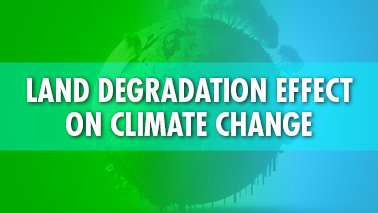
Land, like air and water, is a critical resource for humanity. Multiple factors contribute to land degradation, including harsh meteorological conditions, human activities that contaminate or damage the quality of soils and land utility. Most significant is climate change, it is a major contributor to land degradation. Climate change is expected to be a leading cause of biodiversity loss, accounting for around 10% of all human-induced greenhouse gas emissions. The well-being of at least 3.2 billion people is being harmed by land degradation caused by human activities. Land degradation and climate change will cut crop yields by an average of 10% globally by 2050, and by up to 50% in some places. Land degradation, particularly in developing nations, increases the number of people exposed to dangerous air, water, and land pollutants. Desertification is a type of land degradation in which productive land is transformed into a desert. Deforestation, land abandonment, declining wild species populations, loss of soil health, reduction of fresh water are all examples of land degradation. The loss of biodiversity and ecosystem cost the equivalent of nearly 10% of the world's annual gross GDP in 2010. The expansion and unsustainable management of agriculture is the primary global driver of land degradation, t his results in severe biodiversity loss. Scientists recently warned that unsustainable agriculture methods are causing the loss of 24 billion tonnes of valuable soil each year. By 2050, 95 percent of the Earth's land areas might be degraded if current trends continue.
Tags
Geology Conferences
Green Energy Conferences
Recycling Conferences
Earth Science Conferences 2026
Climate Change Conferences 2026 Europe
Ecology Conferences
Remote Sensing Conferences
Earth Science Conferences 2026 Asia
Earth Science Conferences
Environmental Science Conferences
Climate Science Conferences
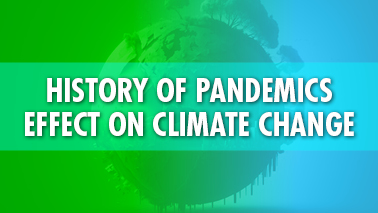
The greatest epidemics in history have wiped out practically whole civilizations, but the impact of an outbreak extends beyond death to include global economic collapse and climate disruption. Climate change is mostly the result of human activity on the planet. We can speculate that the global consequences of closing borders, bars, and schools, as well as travel restrictions and shelter in place orders, have benefited the earth. Mother Earth appears to be mending, at least for the time being, with the reduction of air pollutants and carbon emissions. Despite the positive decreases in carbon footprint, it is possible that the mitigation will only be temporary, medical and hazardous waste is currently being produced in large quantities by patients and healthcare personnel. COVID-19 added a new dimension to weather, climate, and water-related dangers, with far-reaching cumulative effects on human health and well-being. Extreme weather and climatic disasters amplified the consequences of mobility limitations, economic downturns, and agricultural sector disruptions across the entire food supply chain, increasing food insecurity and reducing humanitarian aid delivery. The epidemic also messed up weather forecasting and made catastrophe risk reduction more difficult. Scientists are also looking into the possibility of a link between disease transmission and climate change. So far, At this time, there is no conclusive evidence that weather (short-term fluctuations in meteorological conditions) or climate (long-term averages) have a significant impact on emergence or transmission of COVID-19 illness.
Tags
Recycling Conferences
Climate Science Conferences
Soil Science Conferences
Earth Science Conferences 2026 Asia
Climate Change Conferences 2026
Geology Conferences
Climate Change Conferences 2026 Europe
Earth Science Conferences 2026 Europe
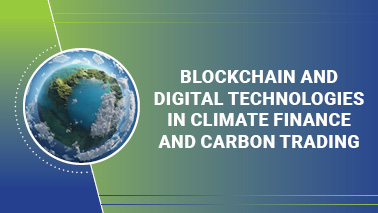
Blockchain and digital technologies are emerging as powerful tools to tackle climate change. Blockchain can improve transparency and accountability in carbon tracking by securely recording emissions data and carbon credits. This enables real-time monitoring of emissions and ensures that carbon offset efforts are verified, reducing the risk of double-counting or fraud.
Digital technologies, like IoT and AI, enhance climate action by enabling more accurate data collection and predictive analysis. IoT devices track environmental changes, while AI processes vast amounts of climate data to improve weather forecasting and optimize resource usage. Together, these technologies foster sustainable practices, support renewable energy, and promote efficient supply chains, contributing to global climate goals.
Sub-tracks :
Tags
Soil Science Conferences
Earth Science Conferences 2026 Asia
Climate Science Conferences
Earth Science Conferences 2026
Climate Change Conferences 2026 Europe
Environmental Science Conferences
Green Energy Conferences
Climate Change Conferences 2026
Earth Science Conferences 2026 Europe
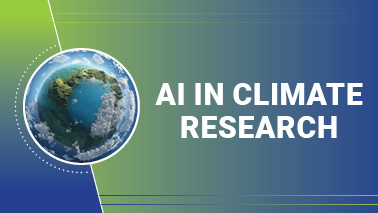
AI in Climate Research is revolutionizing the way scientists study, predict, and respond to climate change. Through the integration of artificial intelligence, machine learning, and big data analytics, researchers can analyze vast and complex climate datasets from satellites, sensors, and models with unprecedented speed and accuracy. AI enhances the understanding of atmospheric, oceanic, and terrestrial processes, helping to identify critical patterns and predict future climate scenarios. It significantly improves the precision of climate modeling and forecasting, allowing for early detection of extreme weather events such as hurricanes, droughts, and floods. Furthermore, AI aids in monitoring greenhouse gas emissions, optimizing renewable energy resources, and developing sustainable adaptation strategies to mitigate the impact of global warming. By supporting data-driven decision-making, AI empowers governments, scientists, and industries to take informed actions toward achieving environmental sustainability and climate resilience.
Sub-tracks :
Tags
Soil Science Conferences
Ecology Conferences
Remote Sensing Conferences
Environmental Science Conferences
Climate Science Conferences
Green Energy Conferences
Climate Change Conferences
Earth Science Conferences 2026 Asia
Geology Conferences
Recycling Conferences
Earth Science Conferences 2026
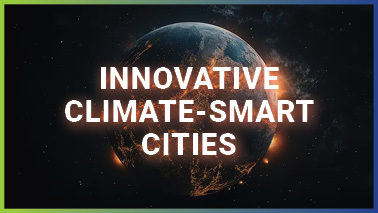
Innovative Climate-Smart Cities represent the next generation of urban development—cities that leverage technology, sustainable design, and data-driven planning to reduce carbon emissions, enhance resilience, and improve the quality of urban life. These cities integrate renewable energy systems, smart transportation, green infrastructure, and efficient resource management to address the challenges of climate change and rapid urbanization. By combining digital innovation with environmental stewardship, climate-smart cities promote energy efficiency, waste reduction, and adaptive infrastructure capable of withstanding extreme weather events. They also emphasize citizen engagement, equitable access to resources, and the creation of healthier, more livable urban environments.
Sub-tracks :
Tags
Ecology Conferences
Earth Science Conferences 2026 Asia
Climate Science Conferences
Earth Science Conferences
Green Energy Conferences
Earth Science Conferences 2026
Climate Change Conferences 2026 Europe
Environmental Science Conferences
Climate Change Conferences
Remote Sensing Conferences
Recycling Conferences

The term "biodiversity" is a contraction of "biological diversity," and it refers to all organisms, species, and populations, as well as their genetic variety and complex assemblages of communities and ecosystems. It also refers to the interconnectedness of genes, species, and ecosystems, as well as the interactions between them and the environment. Genetic, species, and ecosystem diversity are usually considered at three levels of biodiversity. Biodiversity refers to the diversity of life on the planet. Each of these species and organisms work together in ecosystems to preserve balance and support life, much like an intricate web. Biodiversity provides everything we need to survive in nature, including food, clean water, medicine, and shelter. Biodiversity supplies us with a diverse range of nutrients and resources, as well as economic benefits. Biodiversity is also a vital component of the ecological services that keep life on Earth tolerable. They range from wetlands purifying water and absorbing toxins to plants supplying oxygen for us to breathe—just one of the numerous things plants do for us.
Sub-tracks :
Tags
Recycling Conferences
Earth Science Conferences 2026 Asia
Remote Sensing Conferences
Earth Science Conferences 2026 Europe
Climate Science Conferences
Earth Science Conferences 2026
Ecology Conferences
Environmental Science Conferences
Earth Science Conferences
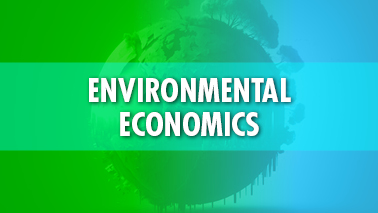
Environmental economics is a branch of economics that focuses on environmental concerns. Environmental economics differs from ecological economics in that it highlights the economy as a subsystem of the ecosystem with an emphasis on natural capital preservation. Environmental economics, in its broadest sense, studies how economic activity and policies affect the environment in which we live. It studies how environmental and natural resources are generated and managed using economic concepts. The costs and benefits of various policy solutions can be compared using a range of economic techniques. EPA is also conducting new research to improve approaches for calculating the economic impact of environmental outcomes. Environmental economists conduct research to determine the economic implications of environmental policy, both theoretically and empirically. This branch of economics aids users in the creation of appropriate environmental policies as well as the analysis of the effects and merits of existing or prospective policies. Sustainable scale, equitable distribution, and efficient allocation are the three interconnected goals of ecological economics. All three of these factors lead to human happiness and long-term sustainability.
Sub-tracks :
Tags
Earth Science Conferences 2026 Europe
Earth Science Conferences
Climate Change Conferences 2026 Europe
Earth Science Conferences 2026 Asia
Green Energy Conferences
Earth Science Conferences 2026
Recycling Conferences

The study of the physics of the Earth and its environs in space is known as geophysics. Geophysics is a key part of the Earth sciences that studies the Earth using physics principles and methods. The temperature distribution of the Earth's interior; the source, configuration, and changes of the geomagnetic field; and large-scale characteristics of the terrestrial crust, such as rifts, continental sutures, and mid-oceanic ridges, are all topics covered by geophysics. Modern geophysical research includes phenomena in the Earth's atmosphere's outer layers, as well as the physical attributes of other planets and their satellites. Geophysics is used to meet social needs such as mineral exploration, natural disaster mitigation, and environmental protection. Geophysical survey data is used in exploration geophysics to assess areas for environmental remediation, discover groundwater, find archaeological relics, calculate the thickness of glaciers and soils, and study possible petroleum reservoirs and mineral resources.
Sub-tracks:
Tags
Climate Science Conferences
Ecology Conferences
Recycling Conferences
Soil Science Conferences
Climate Change Conferences
Climate Change Conferences 2026 Europe
Remote Sensing Conferences
Earth Science Conferences 2026
Climate Change Conferences 2026
Green Energy Conferences

Glaciology is a scientific field that studies all aspects of ice on landmasses. It examines the structure and properties of glacier ice, as well as its production and distribution, ice flow dynamics, and ice accumulation-climate interactions. Glaciological study is carried out using a range of techniques. Radar sounding is used to study the internal structure of glaciers, and the deformation of vertical boreholes or lateral tunnels bored into the ice is used to monitor glacier movement. Remote sensing data is used to estimate ice accumulation over wide areas, and oxygen isotope ratios are typically used to distinguish the distinct annual layers in glacier ice. Glaciers and ice sheets store water in frozen form during cold and overcast seasons and progressively release it during bright, hot periods when liquid water is most needed downstream. Glaciers hold and release massive amounts of water in non-ideal situations. Glaciologists have faced a hard task in cataloguing the world's glacier distribution, defining their state and dynamics, and measuring basic glaciological metrics like length and area. The discovery of water ice on the Moon, Mars, Europa, and Pluto gives the field of "astroglaciology" an alien dimension.
Sub-tracks:
Tags
Environmental Science Conferences
Climate Change Conferences 2026
Earth Science Conferences 2026 Asia
Green Energy Conferences
Geology Conferences
Ecology Conferences
Earth Science Conferences 2026 Europe
Recycling Conferences

The "Hydrologic Cycle" is the continual movement of water between different regions of the globe (atmosphere, hydrosphere, and lithosphere). Hydrogeology is the study of how water behaves in a geological setting based on hydraulic rules. It includes shaft hydraulic, which is drilling for water for various uses and controlling environmental behaviour, depending on the type of drilled material. Both specialties combine regional and local geology knowledge, as well as superficial and subterranean information, to contribute to the most efficient use of groundwater for long-term development. Geohydrology or groundwater hydrologies are two terms used to describe it. It is concerned with how water enters the earth (recharge), flows in the subsurface (aquifers), and interacts with the surrounding soil and rock (the geology). Hydrogeologists are working to find answers to some of the world's most pressing issues, such as long-term water supply, food and energy production, environmental protection, and climate change adaptation. Hydrogeologists study the geological consequences of surface water in rivers, streams, and lakes, whereas hydrologists assist with the mechanics and chemistry of moving groundwater.
Sub-tracks:
Tags
Climate Change Conferences
Geology Conferences
Climate Change Conferences 2026 Europe
Recycling Conferences
Earth Science Conferences 2026
Remote Sensing Conferences
Earth Science Conferences
Ecology Conferences
Environmental Science Conferences
Climate Change Conferences 2026

One of our most valuable natural resources is water. There would be no life on Earth without it. Hydrology developed as a science in response to the necessity to comprehend the earth's complicated water system and assist in the resolution of water issues. Hydrology is the study of the Earth's waters, including their occurrence, distribution, and movement through the hydrologic cycle, as well as their interactions with living beings. It also covers the chemical and physical properties of water in all of its forms. The study of the link between water and its surroundings is the major goal of hydrology. Hydrology focuses on precipitation, evapotranspiration, runoff, and groundwater since it is primarily concerned with water near the land surface. A hydrologist is a person who studies water on Earth and how humans interact with and use it. Hydrologists rely on their knowledge of how water interacts with its surroundings, such as how it travels from the Earth's surface to the atmosphere and back. Hydrologists use scientific knowledge and mathematical methods to tackle societal water-related issues such as quantity, quality, and availability. They're worried about getting water for cities or irrigated crops, as well as preventing river flooding and soil degradation. They operate in environmental protection, such as preventing or cleaning up pollution, or seeking safe disposal sites for hazardous material.
Sub-tracks:
Tags
Remote Sensing Conferences
Recycling Conferences
Earth Science Conferences 2026 Asia
Green Energy Conferences
Earth Science Conferences
Climate Change Conferences
Environmental Science Conferences
Soil Science Conferences
Earth Science Conferences 2026
Climate Change Conferences 2026
Geology Conferences
Climate Change Conferences 2026 Europe

Limnology is the study of fresh or saline water, which includes lakes, ponds, reservoirs, streams, rivers, and seas, among other aquatic environments. It is an interdisciplinary discipline that studies inland waterways as complex ecological systems by combining biology, chemistry, physics, and geology. Aquatic ecology and hydrobiology, which study aquatic animals and their interactions with the abiotic (non-living) environment, are closely related to limnology. Limnology is the science of integrating the physical, chemical, and biological components of inland aquatic ecosystems with the drainage basin, water movements through the drainage basin, biogeochemical changes that occur en route, and exchanges with the atmosphere. The lake ecology is inextricably linked to its drainage region and atmosphere, as well as the flowing (lotic) waters and ground waters that carry and metabolise land components to the lake. The limnological field combines the functional links of growth, adaption, nutrient cycles, and biological production with species composition, as well as the physical, chemical, and biological conditions that regulate these relationships.
Sub-tracks:
Tags
Climate Change Conferences
Geology Conferences
Recycling Conferences
Climate Change Conferences 2026
Soil Science Conferences
Green Energy Conferences
Environmental Science Conferences
Climate Science Conferences

Meteorology is the branch of science that studies the atmosphere and its phenomena, such as weather and climate. Meteorology is concerned with the study of the troposphere and lower stratosphere in particular. Meteorology is the scientific study of weather and its causes, and it is used to forecast the weather. Meteorologists are commonly thought of as weather forecasters. They study maps, satellite data, and radar data to analyze the physical characteristics of the atmosphere above them. They also compare weather data from local, regional, and international sources. Marine weather forecasting, as it relates to maritime and coastal safety, is an important branch of weather forecasting, in which weather effects also involve atmospheric interactions with enormous bodies of water. The significance of meteorological research can be felt in a variety of ways. Droughts, for example, cause water shortages, crop loss, reduced river flow rates, and increased wildfire risk. Furthermore, these effects may result in river passage restrictions, saltwater infiltration in aquifers and coastal bays, stress on diverse plant and animal species, population shifts, economic hardship, and even political instability. Because of the important importance of weather on human activities, the unreliable science of weather forecasting has developed. Water in the atmosphere changes back and forth between solid, liquid, and gas in a very complex manner makes this research domain very challenging. The equations employed in dynamic meteorology have been drastically altered as a result of these advancements.
Sub-tracks:
Tags
Earth Science Conferences 2026 Asia
Ecology Conferences
Green Energy Conferences
Climate Change Conferences 2026 Europe
Climate Change Conferences 2026
Earth Science Conferences 2026
Earth Science Conferences 2026 Europe
Soil Science Conferences
Climate Change Conferences

Natural hazards are physical phenomena that occur in nature and might be geophysical, hydrological, climatological, meteorological, or biological in nature. Natural hazards occur on a variety of time and area scales, and each is distinct in some way. Such tragedies result in significant human and material losses, which constitute a severe impediment to long-term growth. Lives and property can be safeguarded by providing accurate predictions and warnings in an easily accessible format, as well as educating people on how to safeguard for these kinds of threats before they become disasters. Severe and extreme weather and climatic phenomena are examples of natural hazards. Despite the fact that they can occur anywhere on the planet, some locations are more prone to specific hazards than others. When people's lives and livelihoods are devastated, natural disasters become disasters. The global yearly average loss in the built environment due to tropical cyclones (wind and storm surge), earthquakes, tsunamis, and floods is presently estimated to be US$314 billion.
Sub-tracks:
Tags
Earth Science Conferences 2026 Asia
Environmental Science Conferences
Earth Science Conferences 2026
Ecology Conferences
Earth Science Conferences
Climate Science Conferences
Climate Change Conferences 2026
Geology Conferences
Green Energy Conferences

Oceanography is the study of the ocean's physical, chemical, and biological characteristics, as well as the ocean's ancient history, current state, and future. The function of oceanographers may be more vital now than it has ever been, as the ocean is endangered by climate change and pollution, coasts are crumbling, and entire species of marine life are on the verge of extinction. Biological oceanography is, in fact, one of the most important branches of oceanography today. It is the study of the plants and animals that live in the ocean, as well as their interactions with the marine environment. However, oceanography includes more than just research and study. It's also about leveraging that data to assist leaders in making informed decisions regarding policies that affect ocean health. Oceanography has influenced how humans use the sea for transportation, food, energy, water, and a variety of other purposes. Oceanography is concerned with more than just the sea's living species. Geological oceanography is a discipline of oceanography that studies the creation of the seabed and how it evolves through time. The study of the interactions between the bottom, the coastline, and the atmosphere is known as physical oceanography. Chemical oceanography, on the other hand, is the study of seawater's chemical composition and how it is changed by weather, human activity, and other variables.
Sub-tracks:
Tags
Geology Conferences
Climate Change Conferences
Climate Change Conferences 2026
Earth Science Conferences 2026 Asia
Earth Science Conferences 2026
Environmental Science Conferences
Ecology Conferences
Climate Change Conferences 2026 Europe
Climate Science Conferences
Earth Science Conferences 2026 Europe

Paleontology is the study of prehistoric life, which includes dinosaurs as well as prehistoric plants, animals, fish, insects, fungi, and even bacteria. Fossil evidence indicates how organisms evolved over time and how our world looked in the past. Plants, animals, fungi, bacteria, and single-celled organisms that have been replaced by rock material or impressions of species preserved in rock are known as fossils. Paleontologists study the remains of extinct and living species to learn more about them. Individual fossils may include information on the life and surroundings of an organism. Paleontology is concerned with all elements of ancient life forms' biology, including their shape and structure, evolutionary patterns, taxonomic relationships with other ancient life forms and contemporary living species, geographic distribution, and interactions with the environment. Its investigative methods include biometry, which is used to provide a statistical description of organism shapes and the quantitative expression of taxonomic connections. Paleontology has played an important part in reconstructing Earth's history and has offered plenty of evidence to back up evolution hypothesis.
Sub-tracks:
Tags
Climate Science Conferences
Soil Science Conferences
Climate Change Conferences 2026 Europe
Ecology Conferences
Earth Science Conferences 2026 Europe
Earth Science Conferences
Recycling Conferences
Climate Change Conferences
Geology Conferences

The study of the processes that shape the Earth's surface, the animals and plants that live there, and the spatial patterns they exhibit is known as physical geography. Physical geography focuses on the Earth's land-surface and envelope, emphasizing the geographical differences that occur as well as the temporal changes that are required to comprehend the Earth's current environments. Its goal is to figure out how the physical environment of the Earth affects and is changed by human activity. Physical geography is split into geomorphology, climatology, hydrology, and biogeography. It develops research that impact environmental management and design, drawing on skills in mathematical and statistical modeling as well as remote sensing. Physical geographers study the earth's landscapes, surface processes, and climate—all of the activity that occurs in atmosphere, hydrosphere, biosphere, and lithosphere. There are many different factors that make up physical geography. Seasons, the composition of the atmosphere, atmospheric pressure and wind, storms and climatic disturbances, climate zones, microclimates, the hydrologic cycle, soils, rivers and streams, flora and fauna, weathering, erosion, natural hazards, deserts, glaciers and ice sheets, coastal terrain, ecosystems, geologic systems, and much more are among the topics covered.
Sub-tracks:
Tags
Climate Science Conferences
Climate Change Conferences 2026 Europe
Earth Science Conferences
Climate Change Conferences
Earth Science Conferences 2026 Asia
Earth Science Conferences 2026 Europe
Soil Science Conferences
Remote Sensing Conferences

The process of minimizing or eliminating the release of pollutants into the environment is known as pollution control. Pollution control is any of a number of techniques used to limit the environmental damage caused by the discharge of dangerous substances and energies. Waste disposal systems, such as sanitary landfills, automotive emission control systems, sewerage system sedimentation tanks, electrostatic precipitation of pollutants from industrial gas, and recycling are all examples of pollution control methods. Pollution occurs when toxins are introduced into the natural environment and cause harm. Pollution can be in the form of any substance (solid, liquid, or gas), or it might be in the form of energy (such as radioactivity, heat, sound, or light). Pollutants are either foreign substances/energies or naturally occurring pollutants that contribute to pollution. Air pollution, light pollution, litter, noise pollution, plastic pollution, soil contamination, radioactive contamination, thermal pollution, visual pollution, and water pollution are all major types of pollution. The control of pollution, second only to the conservation of species from loss of biological diversity, is the conservation concern of largest magnitude; it could even be argued that pollution control is more urgent and crucial than the conservation of species from loss of biological diversity. Pollution control does not imply abandoning current profitable human activities, but rather rearranging them so that their negative consequences do not outweigh their benefits.
Sub-tracks:
Tags
Geology Conferences
Soil Science Conferences
Earth Science Conferences
Climate Change Conferences 2026 Europe
Green Energy Conferences
Earth Science Conferences 2026 Asia
Ecology Conferences
Earth Science Conferences 2026 Europe

Waste materials are recycled, recovered, and reprocessed for use in new goods. The gathering of waste materials, their processing or production into new products, and the purchase of those items, which can then be recycled, is the basic processes in recycling. Internal and external recycling operations are the two main types of recycling operations. Internal recycling is the reuse of materials that are a waste product of a manufacturing process within that process. The advantages are numerous, and everyone benefits when people recycle on a regular basis. The benefits of a well-maintained recycling program are numerous, whether it is a community effort to help beautify a dirty neighborhood street or on a bigger scale to assist a corporation save hundreds to thousands of dollars on waste management. Recycling can assist to minimize the amount of solid waste dumped in landfills, which are becoming increasingly costly. Recycling also minimizes garbage disposal-related contamination of the air, water, and land.
Sub-tracks:
Tags
Earth Science Conferences 2026 Asia
Green Energy Conferences
Earth Science Conferences 2026 Europe
Climate Change Conferences 2026 Europe
Earth Science Conferences 2026
Earth Science Conferences
Climate Change Conferences
Environmental Science Conferences
Ecology Conferences
Climate Change Conferences 2026

The process of eliminating toxins from polluted places caused by industrial, manufacturing, mining, and commercial activity is known as remediation. From detection, investigation, assessment, determination of remedial measures, actual clean-up, and site rebuilding, remediation is an all-encompassing step process of land restoration. To lessen the environmental impact, dirty or contaminated soil, sediment, surface water, or groundwater is removed during remediation. Environmental remediation is carried out on soil, sediment, groundwater, and surface water, among other environmental media. The process of eliminating toxins from water is known as water remediation. Pollutants dumped directly into the water or drainage from the ground can contaminate surface water in lakes, streams, and rivers. Contaminants seeping through the soil and sediment above it can damage groundwater, which is the underground water that saturates porous material. Groundwater pollution has also happened as a result of industrial practices including mining and natural gas and oil drilling. Soil remediation refers to methods for cleaning and revitalizing the soil. Many of the same variables that cause groundwater pollution also cause soil contamination. Soil and groundwater are frequently affected by the same source, necessitating simultaneous remediation. Chemical spills, industrial activity, and the use of certain fertilizers and pesticides can all lead to soil pollution. In-situ and ex-situ environmental remediation are two different types of environmental remediation. Ex-situ remediation includes excavating soil or sediment and treating it before returning it to its original state, whereas in-situ remediation involves treating contamination on the site without removing soil. Environmental remediation is the process of removing toxins from the environment.
Sub-tracks:
Tags
Environmental Science Conferences
Earth Science Conferences 2026
Ecology Conferences
Remote Sensing Conferences
Earth Science Conferences
Climate Change Conferences 2026 Europe
Earth Science Conferences 2026 Europe
Geology Conferences
Climate Change Conferences

In contrast to in situ or on-site observation, remote sensing is the collecting of information about an object or phenomenon without making direct contact with it. The method of detecting and monitoring the physical features of a region by measuring its reflected and emitted radiation from a distance, usually via a satellite or aircraft, is known as remote sensing. Active and passive remote sensing are the two forms of remote sensing technology. Active sensors produce energy to scan objects and spaces, after which a sensor detects and measures the reflected or backscattered radiation from the target. Active remote sensing techniques such as RADAR and LiDAR measure the time delay between emission and return to determine an object's location, speed, and direction. Radiation emitted or reflected by the object or its surroundings is collected by passive sensors. The most prevalent source of radiation measured by passive sensors is reflected sunlight. Remote sensing has numerous applications in a variety of industries. Data can be utilized for coastal mapping and erosion control, as well as hazard assessment and natural resource management. Remote sensing can be used to monitor air quality in cities, as well as urban planning and climate change.
Sub-tracks:
Tags
Climate Change Conferences
Green Energy Conferences
Environmental Science Conferences
Remote Sensing Conferences
Climate Science Conferences
Earth Science Conferences 2026 Asia
Soil Science Conferences
Recycling Conferences

The removal of contaminants from wastewater, or sewage, before it reaches aquifers or natural bodies of water such as rivers, lakes, estuaries, and seas is known as wastewater treatment. Because pure water does not exist outside of chemical laboratories, any differentiation between clean and contaminated water is based on the type and concentration of pollutants contained in the water, as well as its intended purpose. Water is said to be polluted in broad terms when it contains enough contaminants to make it inappropriate for a specific use, such as drinking, swimming, or fishing. Although natural factors influence water quality, the term pollution usually refers to contamination caused by human activity. As a result, water pollution is mostly caused by the discharge of contaminated wastewater into surface or groundwater, and wastewater treatment is a key component of water pollution prevention. Domestic sewage, industrial sewage, and storm sewage are the three types of wastewater or sewage. Domestic sewage, also known as sanitary sewage, transports used water from homes and flats. Water from manufacturing or chemical operations is used in industrial sewage. Storm sewage, often known as storm water, is rainwater collected in a system of pipelines or open channels. There has been numerous sewage treatment technologies created, the majority of which use biological treatment processes. When selecting an appropriate technology, engineers and decision makers must consider technical and economic criteria, as well as quantitative and qualitative characteristics of each option.
Sub-tracks:
Tags
Climate Change Conferences
Geology Conferences
Climate Change Conferences 2026 Europe
Earth Science Conferences 2026 Asia
Earth Science Conferences
Remote Sensing Conferences
Ecology Conferences
Earth Science Conferences 2026
Green Energy Conferences

Soil is one of the most significant natural resources on the planet. Mineral soil is a mixture of organic materials, minerals, gases, and water that makes up the top layer of the Earth's crust. As erosion of the bedrock on the Earth's surface interacts with decomposing organic matter, soil emerges progressively over time. Soil often forms in layers (also known as horizons) that differ in colour and texture from one another. It has the potential to aid in the fight against and mitigation of climate change. It's also a diverse and complex ecosystem that supports a wide range of wildlife. As a result, the impact of soil on life is enormous. Soil performs a variety of tasks and services that would be impossible to achieve without it. By anchoring roots and storing nutrients, it creates an environment in which plants (including food crops and timber wood) can thrive. It filters and cleans our water, as well as assisting in the prevention of natural disasters such as flooding. It has a huge amount of biodiversity. Finally, it is the largest carbon store on the planet, assisting in climate regulation. Human activities, on the other hand, are endangering and damaging soils all over the world. In terms of structure, depth, texture, and fertility, soils from all around the world differ. Because of these distinctions, soils help human cultures in a variety of ways, including environmental, economic, and social. Mineral matter makes up 45 percent of soil, organic matter makes up 5%, air makes up 25%, and water makes up 25%, and these four components are critical for soil management.
Sub-tracks:
Tags
Climate Change Conferences 2026
Environmental Science Conferences
Earth Science Conferences 2026 Europe
Green Energy Conferences
Recycling Conferences
Earth Science Conferences 2026 Asia
Climate Change Conferences
Climate Science Conferences
Climate Change Conferences 2026 Europe
Ecology Conferences
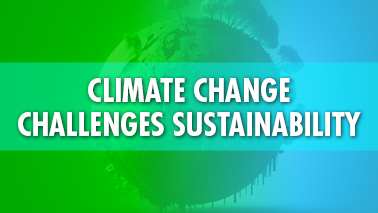
Climate change is the most significant environmental issue humanity will confront in the coming decade. Climate change, which is triggered by a rise in global temperatures, causes an array of harmful impacts on earth, affecting the physical, biological, and human systems. Melting of the poles, glacial regression, snow melting, warming and thawing of permafrost, floods, droughts, and sea level rise are all examples of climate change affects on the planet's physical processes. Death of flora and fauna in terrestrial and marine ecosystems, as well as wildfires, are the most common occurrences in biological systems. Climate change has an impact on and damages crops and food production in human systems, which leads to diseases, mortality, and loss of economic livelihoods. Climate change, economic scarcity, and poverty are all linked in one way or another. The commitment to conserve natural resources and maintain global ecosystems in order to support health and quality of life today and in the future is known as environmental sustainability. Climate change is one of the most significant problems to environmental sustainability which raises development costs by 25 to 30 percent in the underdeveloped and developing countries.
Tags
Ecology Conferences
Remote Sensing Conferences
Green Energy Conferences
Earth Science Conferences
Soil Science Conferences
Geology Conferences
Environmental Science Conferences
Earth Science Conferences 2026
Climate Change Conferences 2026 Europe
Climate Science Conferences
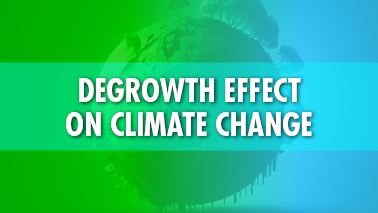
Degrowth refers to a set of theories that challenge the economic growth paradigm. Acknowledgement of our planet's limits, concomitant slowdown in resource extraction, production and consumption, are all part of the agenda. The goal of degrowth is to reduce our dependency on environmentally unsustainable extraction and manufacturing techniques, not necessarily to limit the size of our economy. Climate change challenges cannot be solved without addressing the world's rapidly rising human population, which leads to increased consumption and carbon emissions. The climate change, considered as the greatest concern, is being aggravated by increasing human population pressure, while it continues to impact the planet's inhabitants. De-growth, not only economically but also in terms of population, is the only way to combat climate change. De-growth as a theory condemning economic expansion is based on a number of paradigms, including political ecology, ecological economics, and environmental justice. Conventional climate and environmental policy has evolved over time with the assumption of reducing carbon emissions, preserving ecosystems, and saving endangered species while improving material living standards for everyone on the planet. Degrowth, on the other hand, implies a new type of economy, one that can support development despite a drop in aggregate activity. Degrowth would require societies abandoning the concept that only GDP growth is an adequate sign of growth and instead embracing to live better while producing less In terms of climate politics, degrowth is still a minor trend, but it's gaining traction.
Tags
Earth Science Conferences 2026 Europe
Climate Change Conferences 2026
Earth Science Conferences 2026 Asia
Climate Change Conferences
Ecology Conferences
Geology Conferences
Climate Science Conferences
Remote Sensing Conferences
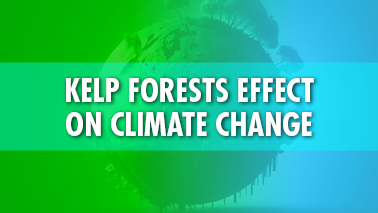
Kelp is a form of seaweed that is commonly farmed. It is a keystone organism, t his brown alga can be found in cold, coastal marine waters all around the world. Kelp forests can be found primarily throughout the Eastern Pacific Coast, from Alaska and Canada to the waters off the coast of California. It grows extremely fast, up to 2ft per day and requires no fertilizer or weeding. This abundant habitat supports a diverse range of fish, invertebrates, and marine mammals, forming the foundation of a diverse ecosystem. Kelps can be found in subtidal areas. Bull kelp is an annual species that dies and regrows every year, while giant kelp is a perennial species that survives for several years. It employs photosynthesis to absorb CO2 and produce biomass. Kelp can trap up to 20 times more carbon per acre than land forests, assisting in the slowing of local acidification. Coastal marine systems can absorb carbon at up to 50 times the rate of land-based forests. Kelp forests are also among the world's most prolific ecosystems, allowing them to support the diverse assemblage of species that would otherwise be extinct. Kelp cleans the water and filters the waste products produced by the forest creatures. However, climate change puts these natural carbon sinks in jeopardy. As atmospheric carbon dioxide levels rise, more of the gas is dissolved in the oceans, making them more acidic. This, combined with warming oceans, it is already wreaking havoc on coral reefs and seaweed ecosystems. Extreme marine heat waves, similar to coral bleaching events or forest die-offs on land, have caused rapid and huge kelp die-offs in recent years.
Tags
Earth Science Conferences
Green Energy Conferences
Ecology Conferences
Recycling Conferences
Climate Change Conferences 2026
Climate Science Conferences
Geology Conferences
Climate Change Conferences

Introduction
Climate modeling and prediction refer to the use of mathematical and computational models to simulate and forecast various aspects of the Earth's climate system. These models are essential tools for understanding past and future climate changes, as well as for making informed decisions related to climate policy and adaptation.
Climate models are typically based on a complex set of mathematical equations that describe various processes in the Earth's atmosphere, oceans, and other components of the climate system. These models take into account factors such as temperature, humidity, wind patterns, greenhouse gas concentrations, and more.
Climate modeling serves several purposes:
• Understanding Past Climate: By using historical data and observations, climate models can simulate past climate conditions. This helps scientists validate the models and understand the Earth's climate history.
• Projecting Future Climate: Climate models are used to make predictions about future climate conditions based on different scenarios, including greenhouse gas emissions, land use changes, and more. These predictions are crucial for understanding potential future impacts of climate change.
• Assessing Climate Impacts: Climate models help assess the potential impacts of climate change on various aspects of society and the environment, such as sea-level rise, extreme weather events, and shifts in ecosystems.
• Policy and Planning: Climate models supply vital data that empower policymakers and planners to make informed decisions regarding climate change mitigation, such as reducing greenhouse gas emissions, and adaptation strategies, such as constructing resilient infrastructure.
The Process of Climate Modeling
Climate modeling is a complex process that involves several key components:
• Data Collection: Scientists gather a vast amount of data from diverse sources, such as satellites, weather stations, and ocean buoys, to construct a comprehensive snapshot of the present climate.
• Model Construction: Climate models are constructed based on the laws of physics, chemistry, and biology that govern the climate system. These models consist of various components, each representing the atmosphere, oceans, land surface, and ice sheets. These components work together to simulate the intricate interactions within the Earth's system.
• Model Validation: Researchers validate climate models by comparing their output to historical climate data. Models must accurately reproduce past climate conditions to be considered reliable.
• Scenario Simulations: Scientists run climate models with different scenarios to project future climate conditions. These scenarios include varying levels of greenhouse gas emissions and other relevant factors.
Challenges and Uncertainties
• Complexity: The Earth's climate system is extremely complex, and models need to simplify it in order to be computationally feasible. However, this simplification can introduce uncertainties into predictions.
• Uncertain Inputs: Climate models depend on data inputs, and some of these inputs, such as future emission projections, may be uncertain. Uncertainty in input data can affect the accuracy of model results.
• Model Limitations: Models cannot have all aspects of the climate system, such as small-scale processes or sudden changes, which may affect their ability to make accurate predictions.
Tags
Remote Sensing Conferences
Earth Science Conferences 2026 Asia
Soil Science Conferences
Green Energy Conferences
Ecology Conferences
Climate Change Conferences 2026
Climate Change Conferences 2026 Europe
Climate Science Conferences
Climate Change Conferences
Environmental Science Conferences
Earth Science Conferences 2026
Earth Science Conferences
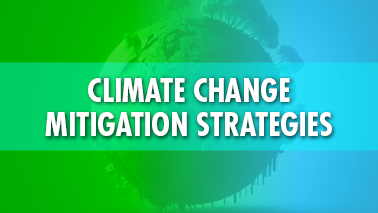
Introduction:
Climate change is a major issue today. Scientists agree that human activities such as burning fossil fuels and cutting down trees are increasing the amount of greenhouse gases in the atmosphere. These gases heat up the world, causing a number of problems. We need strategies to reduce these emissions to fix this.
Key Climate Change Mitigation Strategies:
• Transition to Renewable Energy: Using renewable energy sources like solar, wind, and water power is very important. It means we rely less on fossil fuels and pollute less. To make this switch faster, we need government support and investments from companies.
• Energy Efficiency: Saving energy is crucial in fighting climate change. We can do this by using less energy in buildings, transportation, and industries. This means using better technology, like energy-saving appliances, and building things in a more eco-friendly way.
• Reforestation and Afforestation: Forests act as natural carbon sinks, absorbing and storing carbon dioxide from the atmosphere. Afforestation (planting new forests) and reforestation (restoring degraded forests) are effective strategies for sequestering carbon and enhancing biodiversity. They also help mitigate the impacts of deforestation. Trees are critical in absorbing CO2 and supporting ecosystems.
• Sustainable Agriculture: Agriculture is a significant source of greenhouse gas emissions, particularly methane and nitrous oxide. Sustainable farming practices, such as no-till farming, crop rotation, and reduced meat consumption, can reduce emissions and promote soil health.
• Circular Economy: A circular economy promotes recycling and reusing materials to reduce the environmental impact of manufacturing and waste disposal. This approach conserves resources and minimizes waste, ultimately reducing emissions.
• Carbon Pricing: Carbon pricing, like carbon taxes or cap-and-trade, makes people and businesses pay for their carbon emissions. This gives them a good reason to use cleaner technologies and pollute less.
• Sustainable Transportation: By encouraging the use of electric cars, bicycles, and public transportation, we are able to minimise pollution in the transportation sector. Governments can support eco-friendly choices by investing in greener public transportation systems.
• Climate-Resilient Infrastructure: It is essential to build and upgrade infrastructure with climate change in mind, including flood protection, resilient urban planning, and sustainable water management.
• International Cooperation: To set carbon reduction goals and mobilize resources for climate action, global collaboration through agreements like the Paris Agreement is crucial. Global cooperation is necessary to address the issue of climate change.
Tags
Earth Science Conferences 2026 Europe
Environmental Science Conferences
Climate Science Conferences
Green Energy Conferences
Recycling Conferences
Climate Change Conferences 2026 Europe
Remote Sensing Conferences
Earth Science Conferences 2026 Asia
Ecology Conferences
Soil Science Conferences

Introduction:
Climate finance and investment are financial resources and activities that helps in the prevention of climate change and leading to a cleaner, greener future. They are important in the global fight against climate change.
The Climate Crisis: A Global Emergency:
Climate change is a global emergency that requires immediate attention and action. The overwhelming scientific consensus states the critical importance of addressing climate change as its effects become more severe. Rising temperatures, extreme weather events, sea-level rise, and ecosystem disruptions are just a few of the issues we are dealing with.
The Transformative Power of Climate Finance and Investment:
• Mitigation Projects: Climate financing provides funds for projects that reduce greenhouse gas emissions. This includes things like clean energy, efficient technologies, and tree planting. These projects are essential in reducing global warming and dealing with climate issues.
• Adaptation Initiatives: Adaptation Initiatives are projects that help communities, ecosystems, and systems cope with the effects of climate change. They make people and nature stronger, more protected and more resilient to extreme weather and rising sea levels. Building strong structures, preparing for disasters, and using sustainable farming methods are examples of these projects. They are critical in global efforts to assist societies in coping with climate change and growing despite its challenges.
• Innovation and Clean Technology: Innovation and clean technology refer to new and improved ideas and technologies that help reduce pollution and environmental harm. These innovations lead to cleaner and more sustainable ways of doing things, such as producing energy, managing waste, and conserving resources. They play an important role in addressing environmental issues and are necessary for achieving a greener and more sustainable world.
• Inclusive Development: Climate finance should prioritise ensuring that everyone, including those living in poverty, has access to the resources and opportunities required to deal with climate change. This approach helps to reduce inequalities and ensures that the benefits of climate action are spread fairly.
Challenges and Opportunities:
Climate change presents both challenges and opportunities. Rising temperatures, extreme weather events, and ecosystem disruption are among the challenges, all of which pose a threat to human health and the environment. Addressing climate change, on the other hand, provides opportunities for innovation, job creation, and sustainable development. We can reduce the challenges and seize the opportunities to build a more sustainable future by transitioning to cleaner energy sources, adopting eco-friendly technologies, and implementing climate-resilient practises.
• Public-Private Collaboration: Collaboration between the public and private sectors can unlock significant financial resources. Public policies and incentives can stimulate private investments in climate solutions.
• Innovative Financial Mechanisms: Innovative financing instruments, such as green bonds and climate funds, provide avenues for funding climate projects. They allow investors to support sustainability while achieving returns.
• International Solidarity: Global cooperation, exemplified by institutions like the Green Climate Fund, is essential. It ensures that financial support reaches developing nations and that climate finance is distributed fairly.
Tags
Remote Sensing Conferences
Earth Science Conferences 2026
Soil Science Conferences
Earth Science Conferences 2026 Asia
Environmental Science Conferences
Earth Science Conferences
Earth Science Conferences 2026 Europe
Geology Conferences
Climate Science Conferences
Climate Change Conferences 2026 Europe

Introduction:
Climate education and outreach play an important role in the fight against climate change. Education provides critical knowledge about climate-related issues, while outreach connects people to this information. It combination not only raises awareness but also acts as a catalyst for action, enabling communities to address the pressing challenges posed by our changing climate.
The Climate Crisis: A Call for Understanding and Action:
The scientific agreement is clear: human activities, particularly the production of greenhouse gases, are driving global temperatures to record-breaking levels. Climate change's effects are already being seen around the world, from more frequent and severe weather events to rising sea levels and biological disruptions. Climate education and outreach are critical in increasing awareness and developing the skills and knowledge required to address these concerns.
Climate Education: Equipping the Next Generation:
• Formal Education: Climate education in schools and colleges provides students with scientific knowledge, critical thinking skills, and an awareness of the environment. It raises a generation of ecologically sensitive and knowledgeable people.
• Interdisciplinary Approach: Climate education crosses traditional borders, incorporating science, policy, and social concerns. It offers a thorough understanding of the complexity of climate change.
• Hands-On Learning: Experiential and practical activities, like as environmental science projects and field trips, let students interact with climate challenges on a personal level.
Climate Outreach: Empowering Communities:
• Awareness Campaigns: Climate change awareness is raised through campaigns, workshops, and seminars. They engage communities and create a sense of urgency.
• Behavioral Change: Climate awareness campaigns urge people to follow sustainable behaviors such as decreasing energy usage and waste, taking public transit, and supporting clean energy.
• Inclusivity: Effective outreach reaches a wide range of audiences, meeting the needs and problems of various demographic groups. It promotes a sense of shared responsibility for the environment.
Challenges and Future Directions
Climate education and outreach have significant potential, but several obstacles must be overcome. These difficulties include a lack of standardised climate lessons, a lack of resources, and the need to ensure that climate education reaches minority populations. Addressing these issues requires the collaboration of governments, educational institutions, non-profit organisations, and the private sector.
Climate education and outreach will become even more important as time goes on. The growing urgency of the climate crisis necessitates informing the public about the consequences of inaction as well as the benefits of sustainable practises. We can create a more informed and empowered society capable of addressing the interconnected challenges of climate change by increasing climate knowledge, motivating action, and involving communities. Climate education and outreach go beyond simply raising awareness of the issue; they empower individuals and communities to be part of the solution and collaborate for a more sustainable and resilient future.
Tags
Earth Science Conferences 2026 Asia
Earth Science Conferences 2026 Europe
Geology Conferences
Climate Science Conferences
Remote Sensing Conferences
Environmental Science Conferences
Climate Change Conferences 2026
Climate Change Conferences 2026 Europe
Ecology Conferences
Earth Science Conferences

Introduction:
Climate change and human health are interconnected. The changing climate can lead to more extreme weather events, such as heatwaves and storms, which can directly harm people. It also affects air and water quality, spreads diseases, and impacts food and water security, all of which can have negative consequences for human health. Addressing climate change is crucial to protect and improve our well-being.
Climate Change Impacts on Health:
• Extreme Heat: As the Earth gets hotter, we experience more frequent and longer-lasting heatwaves. These extreme heat events can lead to heat-related problems like heat exhaustion and heatstroke. People most vulnerable to these health risks are the elderly, children, and those with existing health issues.
• Air Quality: Climate change makes air pollution worse by increasing ground-level ozone and tiny particle levels. Breathing this dirty air for a long time can cause problems like asthma attacks, bronchitis, and heart issues.
• Vector-Borne Diseases: Changes in climate affect the distribution and behavior of disease-carrying vectors such as mosquitoes and ticks. It helps in spreading transmitted by insects like malaria, dengue fever, and the infection to new areas, exposing previously unaffected populations to these health risks.
• Waterborne Diseases: Increased rainfall and flooding can contaminate water supplies, resulting in outbreaks of waterborne diseases such as cholera and dysentery.
• Mental Health: Climate change-related events, such as hurricanes, wildfires, and lengthy droughts, can cause major depression and trauma among impacted people. Furthermore, the underlying concern caused by a fast-changing climate can contribute to mental health issues.
Vulnerable Populations:
It's important to understand that climate change doesn't harm everyone equally. People with low incomes, marginalised groups, and those with pre-existing health problems are often the most in danger. They might not have the help or resources to handle the health problems caused by climate change, which makes them more at risk of getting sick.
Mitigation and Adaptation Strategies:
• Mitigation: Mitigation is the reduction of greenhouse gas emissions, from which is critical for protecting our health climate change. This includes transitioning to clean energy, utilising energy more efficiently, and promoting environmentally friendly transportation. These actions reduce climate change and improve air quality, which is beneficial to our respiratory health.
• Public Health Infrastructure: Improving public health infrastructure is necessary for responding to climate-related health hazards. This involves the creation of early warning systems for harsh weather events, improved illness surveillance, and the construction of robust healthcare systems.
• Education and Awareness: improving public awareness about climate-related health risks and encouraging healthy behaviours can help reduce health issues. People and societies are empowered by education to adapt to changing climate conditions and adopt health-conscious practices.
• Adaptation: Communities must adjust to changing climatic conditions in order to safeguard human health. This includes developing heat action plans, strengthening water and sanitation infrastructure to avoid waterborne infections, and putting in place vector control measures to prevent disease transmission.
Tags
Earth Science Conferences 2026 Asia
Geology Conferences
Earth Science Conferences 2026 Europe
Climate Change Conferences 2026
Soil Science Conferences
Earth Science Conferences
Environmental Science Conferences
Earth Science Conferences 2026
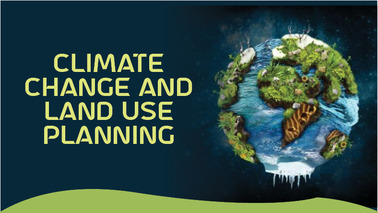
Introduction:
Climate change is a big problem that affects our economy, infrastructure, well-being, and environment. Land use planning is essential to solving this issue. Planning our land use is essential for determining how we utilise and develop it, as well as for addressing climate change. It examines the relationship between land use planning and climate change, highlighting the significance of cautious and sustainable methods to build resilient communities.
The Climate Crisis: Necessitating Strategic Land Use Planning:
The global climate crisis is characterized by rising temperatures, extreme weather events, sea-level rise, and shifting weather patterns. These impacts have profound implications for land use and necessitate a strategic response through land use planning.
The Role of Land Use Planning:
Mitigation of Climate Change:
• Reducing Urban Sprawl: Maintaining a more compact layout of cities and towns is essential to reducing urban sprawl. It involves creating more compact communities where homes, businesses, and green spaces are closer together. This helps in using land more efficiently, reducing the need for long drives, and protecting natural areas. It's about making cities more walkable, with better public transport, so people can easily get around without relying on cars as much.
• Promoting Sustainable Transportation: Well-planned communities prioritize public transportation, cycling, and walking, reducing the reliance on individual vehicles powered by fossil fuels.
• Preserving Natural Carbon Sinks: Strategic land use planning can protect forests, wetlands, and other natural areas that sequester carbon dioxide, helping mitigate climate change.
Adaptation to Climate Change:
• Floodplain Management: Land use planning can designate and protect floodplains, reducing the risk of flooding in vulnerable areas.
• Conserving Green Spaces: Preserving green spaces within urban areas offers natural cooling and flood mitigation, especially during extreme weather events.
• Zoning and Building Codes: Land use regulations can ensure that new construction meets stringent standards for resilience to climate impacts, such as stronger building codes in hurricane-prone regions.
Challenges and Considerations:
• Economic Interests: Balancing economic interests with climate goals can be challenging, as some economic activities may be at odds with sustainability.
• Equity and Access: Ensuring that land use planning benefits all communities, particularly vulnerable and marginalized populations, is crucial to avoid exacerbating inequalities.
• Long-Term Vision: Land use planning requires long-term thinking and commitment, which can be challenging in political contexts that prioritize short-term gains.
Tags
Recycling Conferences
Geology Conferences
Ecology Conferences
Green Energy Conferences
Earth Science Conferences
Earth Science Conferences 2026 Asia
Climate Change Conferences 2026 Europe
Climate Science Conferences

Introduction:
Climate change is deeply connected to how we use land. The choices we make about things like farming, cities, and forests affect the environment and climate a lot. For example, cutting down forests releases a ton of carbon into the air, making climate change worse. But if we plan things smartly, like planting more trees and using better farming methods, we can actually help fight climate change. It's all about making thoughtful decisions about how we use land to make sure we're taking care of the planet.
The Imperative for Green Technology:
Today's environmental problems, like climate change, using up resources, and pollution, are really important, and we need to act fast. Green technology helps with these issues by giving us sustainable solutions that make sense financially and help the environment too.
Green Technology Innovation and Its Impact:
• Renewable Energy Sources: Green technologies have changed the energy sector a lot. Progress in solar, wind, and hydropower has made renewable energy easier to get and more affordable. These changes not only cut down on greenhouse gas emissions but also make more jobs in the renewable energy industry.
• Energy Efficiency: Energy conservation is achieved by the use of improved green technology, particularly in sectors of smarter buildings, appliances, and transportation. This reduces electricity costs and makes these environmentally friendly and economical choices.
• Waste Reduction and Recycling: Green technology is driving innovation in waste management and recycling operations. New ways for repurposing materials and decreasing waste are not only environmentally friendly, but also minimize the demand for resource extraction.
• Clean Transportation: Electric vehicles and green transportation options, based on battery technology and renewable fuels, are lowering greenhouse gas emissions and improving the air quality in cities.
• Sustainable Agriculture: Green technology innovations are improving sustainable agriculture practices, reducing the environmental effect of farming while increasing food production to satisfy the needs of the world's rising population.
• Water and Air Quality: Green technology created solutions for better water purification and air quality control. These advancements are necessary for ensuring clean, safe water and healthy air.
Challenges and Opportunities:
While green technology offers exciting solutions, it also faces obstacles. Some of challenges include early investment costs, resistance to change, and the necessity for international cooperation. However, within these challenges lie opportunities for progress.
• Economic Growth: Green technology innovation builds economic growth by establishing new markets and job possibilities, placing it as a driver rather than a drag on the economy.
• Sustainability: Shifting to a technology-driven green lifestyle not only helps us conserve the environment but also ensures that future generations inherit a planet capable of sustaining human life.
• International Collaboration: As worldwide issues involve global solutions, green technology innovation promotes international cooperation and partnerships, boosting linkages between nations.
Tags
Environmental Science Conferences
Earth Science Conferences
Green Energy Conferences
Climate Change Conferences 2026 Europe
Ecology Conferences
Earth Science Conferences 2026 Asia
Geology Conferences
Earth Science Conferences 2026 Europe
Earth Science Conferences 2026
Climate Science Conferences
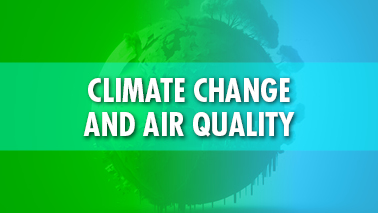
Introduction:
Climate change and air quality are two interconnected global challenges today. While climate change is primarily caused by the growth of greenhouse gases in the atmosphere, air quality deteriorates due to pollutant emissions from lots of places. It examines the complex relationship between climate change and air quality, highlighting the necessity for a comprehensive approach to addressing both important challenges.
Climate Change and Its Impact on Air Quality:
• Increased Temperature: Climate change may affect air quality by raising global temperatures. Higher temperatures can cause the development of ground-level ozone, which is a primary component of smog and has a negative impact on respiratory health.
• Wildfires: Wildfires have become more frequent and intense as a result of climate change. These flames emit massive volumes of particulate matter and toxic chemicals into the atmosphere, causing harm to air quality.
• Changing Weather Patterns: Changed weather patterns caused by climate change can indeed have a significant impact on the dispersion of air pollution. Stagnant air masses, often associated with altered weather patterns, can trap contaminants and result in localized air quality issues. This is a well-documented phenomenon, and it highlights the complex and interconnected nature of climate change and its effects on the environment and public health.
Air Quality Impacts on Climate Change:
• Particulate Matter: Particulate matter emitted into the atmosphere as a result of sources such as fossil fuel combustion can absorb and scatter sunlight, influencing the Earth's energy balance. This can cause regional and global climate patterns to shift.
• Black Carbon: A component of particulate matter, black carbon, is a powerful climate forcer. It can settle on snow and ice, decreasing reflectivity and hastening melting.
Mitigation Strategies:
• Reducing Greenhouse Gas Emissions: Mitigating climate change by reducing greenhouse gas emissions is an important step toward improving air quality. This goal can be achieved by transitioning to clean energy sources, enhancing energy efficiency, and promoting sustainable mobility
• Promoting Renewable Energy: Expanding the use of renewable energy sources, such as wind and solar power, reduces the demand for fossil fuel combustion, which is a significant source of both greenhouse gases and air pollutants
• Sustainable Transportation: Encouraging the usage of electric vehicles and transportation systems can help to reduce greenhouse gas emissions as well as air pollution.
• Forest Management: Effective forest management methods and fire prevention strategies can help reduce the frequency and intensity of wildfires, therefore improving air quality.
Challenges and Considerations:
• Economic Interests: The move to cleaner technologies and industries may meet criticism due to economic interests related to present practices.
• Equity: Sensitive people frequently face the weight of both climate change and poor air quality, emphasizing the significance of fair solutions. correct this sentence
• Global Cooperation: Addressing these interconnected issues requires international coordination and agreements, such as the Paris Agreement, aimed at reducing global-scale climate change
Tags
Geology Conferences
Recycling Conferences
Environmental Science Conferences
Ecology Conferences
Climate Change Conferences 2026
Soil Science Conferences
Earth Science Conferences 2026 Europe
Green Energy Conferences
Climate Change Conferences 2026 Europe
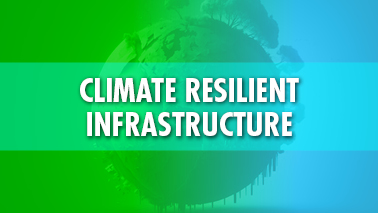
Climate change isn't a distant problem anymore; it's a pressing issue impacting economies, environments, and communities worldwide. One crucial solution to tackle this challenge is climate-resilient infrastructure.
The Climate Challenge:
Climate change leads to various problems, such as extreme weather events, rising sea levels, and shifting weather patterns. As these issues become more severe, the importance of infrastructure that can withstand and adapt to these changes becomes growing evidence.
Defining Climate-Resilient Infrastructure:
Climate-resilient infrastructure means building things like roads, buildings, and systems that can handle big changes in weather. It's about making sure they stay strong and safe, even when there are storms, floods, or other extreme weather. This kind of infrastructure helps protect us from the impacts of climate change and makes our communities stronger and better prepared for the future.
The Role of Climate-Resilient Infrastructure:
Mitigating Climate Risks:
Flood Control: Flood control is all about stopping floods or reducing their damage. It involves making plans and building things like dams, levees, and drainage systems to manage water during heavy rains or storms. By doing this, we aim to protect homes, cities, and farmlands from getting flooded, keeping people safe and preventing damage to buildings and important places. Flood control helps communities stay safer and more secure when heavy rains or storms hit.
Heat-Resilient Urban Planning: The goal of Heat-resilient urban planning is to making cities ready for hot weather. It means creating green spaces like parks and planting trees to keep cities cooler. Also, using materials that don't trap too much heat in buildings and planning for enough shade can help. When cities are prepared for extreme heat, it keeps people safer and more comfortable during hot days, reducing the risk of heat-related problems and making cities more enjoyable places to live.
Adapting to Changing Conditions:
Transportation Systems: Transportation systems need to adjust to different situations. This includes having flexible plans for roads and bridges that can handle various weather conditions and using smart technology to manage traffic effectively.
Resilient Building Design: Resilient building design is making structures that can handle different situations. It's about creating strong buildings that can withstand things like storms and floods. These buildings are smartly designed to keep people safe and secure.
Sustainability and Environmental Protection:
Renewable Energy Infrastructure: Renewable energy infrastructure is all about using clean and natural sources like the sun or wind to create power. It's about building things like solar panels and wind turbines to make electricity without harming the environment. This helps keep our planet healthy by reducing pollution and using energy sources that won't run out.
Eco-friendly Infrastructure: Eco-friendly infrastructure focuses on building things in a way that's good for the environment. It involves using materials and methods that don't harm nature. This helps keep our surroundings healthy, reduces pollution, and ensures that our infrastructure choices are kind to the planet.
Challenges and Opportunities:
Cost and Investment: Building climate-resilient infrastructure can cost a lot of money, but it's also a chance to invest in a safer future. While the initial expenses might be high, it's an opportunity to save money in the long run by avoiding damages from extreme weather. Finding ways to invest wisely in resilient infrastructure can lead to safer communities and better preparedness for the impacts of climate change.
Policy and Regulation: Policy and regulation play a big part in making sure we build resilient infrastructure. They set rules and guidelines for how buildings and systems should be made to handle things like storms and heat. By having good policies and rules, we can make sure that our infrastructure is strong and safe for the future, keeping everyone better protected from the changing climate.
Global Collaboration: Facing the challenges of climate-resilient infrastructure is a team effort worldwide. Global collaboration means countries working together to share knowledge, resources, and solutions. By joining forces, we can find better ways to build strong and adaptable infrastructure that benefits everyone. This collaboration presents an opportunity for a united front against the impacts of climate change, fostering a safer and more resilient world for all.
Tags
Climate Change Conferences
Soil Science Conferences
Environmental Science Conferences
Earth Science Conferences
Geology Conferences
Climate Change Conferences 2026 Europe
Ecology Conferences
Earth Science Conferences 2026
Earth Science Conferences 2026 Europe
Climate Science Conferences
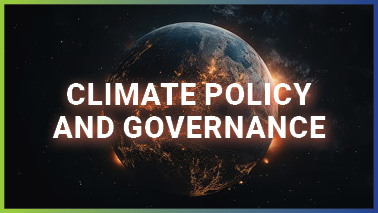
Climate Policy and Governance focuses on the strategies, frameworks, and institutional mechanisms that guide global, national, and local actions to combat climate change. It involves developing effective policies, international agreements, and governance systems that promote sustainable development, reduce greenhouse gas emissions, and enhance climate resilience. Strong climate governance ensures that scientific insights translate into actionable policies, balancing environmental priorities with economic and social needs. It also encourages collaboration among governments, private sectors, and civil society to achieve global climate goals such as those outlined in the Paris Agreement and the UN Sustainable Development Goals (SDGs). Transparent monitoring, adaptive policymaking, and equitable participation are key to ensuring effective and inclusive climate action.
Sub-tracks :
Tags
Recycling Conferences
Earth Science Conferences 2026
Geology Conferences
Climate Change Conferences
Climate Change Conferences 2026
Climate Change Conferences 2026 Europe
Environmental Science Conferences
Climate Science Conferences
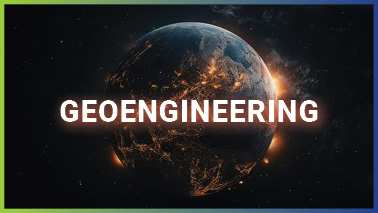
Geoengineering refers to the deliberate large-scale interventions in Earth’s natural systems aimed at counteracting climate change and its impacts. It encompasses a range of technological approaches designed to reduce global temperatures, remove greenhouse gases from the atmosphere, or manage solar radiation. While geoengineering holds potential as a supplementary tool to traditional mitigation strategies, it raises complex scientific, ethical, and governance challenges due to potential risks, uncertainties, and unintended consequences. Research in this field focuses on understanding effectiveness, feasibility, environmental impacts, and policy implications to ensure responsible development and deployment of geoengineering solutions.
Sub-tracks :
Tags
Green Energy Conferences
Climate Change Conferences 2026 Europe
Soil Science Conferences
Geology Conferences
Ecology Conferences
Recycling Conferences
Environmental Science Conferences
Earth Science Conferences 2026
Climate Change Conferences 2026
Earth Science-Global Market Synopsis:
Earth science and environmental monitoring market is estimated to be worth $19.89 billion in 2020 and is expected to expand to $43.48 billion by 2030, with a CAGR of 8.2% between 2021 and 2030.
Climate Chance-Global Market Synopsis:
Over the past 115 years, the yearly average global surface air temperature has risen by around 1.8°F (1.0°C) (1901–2016). The current timeframe is the warmest in human civilization's history (NCA4, Vol. 1, p. 10).
By 2030, it is anticipated that the global market for climate change consultancy would amount to US$9.89 billion. The market is expected to witness a CAGR of 5.7% during the forecast period (2022-2030).
Geology-Global Market Synopsis:
The global market was worth $12.65 billion in 2021. The market size in North America was estimated to be USD 7.84 billion in 2021, with a predicted CAGR of 6.6%. According to technology, the seismic segment dominates the global market. By 2029, it's anticipated that the global market will amount to USD 20.55 billion.
Renewable Energy--Global Market Synopsis:
The global renewable energy market was valued at $881.7 billion in 2020, and is projected to reach $1,977.6 billion by 2030, growing at a CAGR of 8.4% from 2021 to 2030.
Recycling-Global Market Synopsis:
By 2027, the market for recycled plastics will be worth $58.1 billion. The global market for recycled plastics is projected to reach US$40.6 billion in 2020. It is anticipated to increase at a CAGR of 5.3% between 2020 and 2027, reaching a revised size of US$58.1 billion.
The estimated size of the U.S. market is $11 billion, while china is expected to grow at an 8.2% CAGR.
In the United States, the market for recycled plastics is anticipated to reach $11 billion by 2020. Whereas china, is anticipated to grow at a CAGR of 8.1% from 2020 to 2027 to reach a projected market size of US$12.1 billion.
Japan and Canada are two more notable geographic markets, with growth rates for each country predicted to be 2.8% and 4.8%, respectively, from 2020 to 2027. Germany is anticipated to expand within Europe at a CAGR of roughly 3.3%.
Forestry and Deforestation-Global Market Synopsis:
Around 2011 and 2015, nearly 20 million hectares of forest were cleared each year. Every year since 2016, an average of 28 million hectares have been cleared for development.
Record-breaking forest loss occurred in 2016 it covered 29.7 million hectares.
Globally, there was a loss of tree cover of 3,610,000 square kilometers from 2001 to 2018.
The majority of the Amazon rainforest is found in Brazil, which is also the nation that has lost the most forests overall. Each year, almost 1.3 million are lost.
· Brazil: 1.35 million hectares
· DR Congo: 0.481 million hectares
· Indonesia: 0.340 million hectares
· Columbia: 0.177 million hectares
· Bolivia: 0.155 million hectares
Soil Science--Global Market Synopsis:
The market for soil amendments is anticipated to be worth USD 3.6 billion in 2022 and USD 6.0 billion by 2027.
The market for soil fertility testing was valued at USD 4,355.51 million in 2020 and is anticipated to expand to USD 5,891.06 million by 2028; from 2021 to 2028, is projected to expand with a CAGR of 4.1%.
The estimated value of the global soil conditioner market was $2.3 billion in 2021 and is anticipated to increase to $3.7 billion by 2031, with a projected CAGR of 4.7% from 2022 to 2031.
The market for soil analysis technology is anticipated to reach US$ 684 million in 2022 and US$ 1.26 billion by the end of 2032, growing at a CAGR of 6.3% during that period.
In 2021, the global market for environmental testing saw revenue from soil analysis technologies contribute for about 5.7% of total market revenue
Target Audience:
Climatologists, Meteorologists, Geologists, Environmental researchers, Hydrologists, Marine biologists, Oceanographers, Ecologists, Chemical researchers, Geo Scientists, Environmental engineers, Waste management researchers, Earth science association, Young research forum, Geophysicists, Geological Associations and Societies, Sustainability Strategists and Business Entrepreneurs.
Earth Science Societies in USA
American Association of Petroleum | Geologists American Geological Institute | Geological Society of America | International Union of Geodesy and Geophysics | Paleontological Society | American Association of Petroleum Geologists | Association of American State Geologists | American Association of Stratigraphic Palynologists | Association of Environmental & Engineering Geologists | Association of Earth Science Editors | American Geosciences Institute | American Geophysical Union | American Institute of Hydrology | American Mineralogist | American Association for the Advancement of Science | American Association of Petroleum Geologists | Association of Environmental & Engineering Geologists | American Geosciences Institute | American Geophysical Union | American Institute of Professional Geologists | Association for Women Geoscientists | Association for Women In Science | American Water Resources Association | Geological Society of America | National Association of Geoscience Teachers | National Earth Science Teachers Association | National Society of Black Physicists | National Society of Hispanic Physicists | North Seattle Lapidary and Mineral Club | Northwest Geological Society | Society of Exploration Geophysicists | ociety for Advancement of Chicanos and Native Americans in Science | American Association for the Advancement of Science | American Association of Petroleum Geologists | Association of Environmental & Engineering Geologists | American Geosciences Institute | American Geophysical Union | American Institute of Professional Geologists | Association for Women Geoscientists | Association for Women In Science | American Water Resources Association | Geological Society of America | National Association of Geoscience Teachers | National Earth Science Teachers Association | National Society of Black Physicists | National Society of Hispanic Physicists | North Seattle Lapidary and Mineral Club | Northwest Geological Society | Society of Exploration Geophysicists | ociety for Advancement of Chicanos and Native Americans in Science
Earth Science Societies in Europe
Geophysics societies | Geology societies | British Society for Geomorphology | European Geosciences Union | IEEE Geoscience and Remote Sensing Society | International Association for the Physical Sciences of the Oceans | International Association of Cryospheric Sciences | International Association of Geoanalysts | International Association of Geodesy | International Glaciological Society | International Humic Substances Society | International Union of Geodesy and Geophysics | European Desalination Society | European Geography Association - for Students and Young Geographers | European Geosciences Union | European Speleological Federation | European Water Association | Group on Earth Observations | International Association for Engineering Geology and the environment | International Association for Mathematical Geosciences | International Association for the Physical Sciences of the Oceans | International Association of Drilling Contractors | International Association of Geochemistry | International Association of Geodesy | International Association of Geomagnetism and Aeronomy | International Association of Geomorphologists | International Association of Hydrogeologists | International Association of Hydrological Sciences | International Association of Meteorology and Atmospheric Sciences | International Association of Sedimentologists | International Association of Seismology and Physics of the Earth's Interior | International Association of Volcanology and Chemistry of the Earth's Interior | International Cartographic Association | International Desalination Association | International Energy Agency | International Federation of Surveyors | International Geographical Union | International Geosphere-Biosphere Programme - Global Change | International Geothermal Association | International Glaciological Society | International Humic Substances Society | International Hydrographic Organization | International Map Industry Association | International Organisation of Palaeobotany | International Ranger Federation | International Society for Environmental Epidemiology | International Society for River Science | International Society of Exposure Science | International Society of Photogrammetry and Remote Sensing | International Union for Quaternary Research | International Union of Geodesy and Geophysics | International Union of Geological Sciences | International Union of Radio Science | International Union of Soil Science | International Union of Speleology | International Water Association | Scientific Committee on Antarctic Research | University of the Arctic | World Meteorological Organization
Earth Science Societies in Australia
Australian Academy of Science | Australian Bureau of Meteorology | Australian Coral Reef Society | Australian Institute of Marine Science | Australian Institute of Physics | Australian Marine Sciences Association | Australian Medical Association | Australian Meteorological and Oceanographic Society
Earth Science Societies in Asia
Agricultural organizations based in Japan | Chemical Society of Japan | Japan Agency for Marine-Earth Science and Technology | Medical associations based in Japan | Research institutes in Japan | Scientific societies based in Japan | Chemical Society of Japan | Entomological Society of Japan | International Union of Anthropological and Ethnological Sciences | Japan Agency for Marine-Earth Science and Technology | Japan Science and Technology Agency | Japan Society for Bioscience, Biotechnology, and Agrochemistry | Japanese Society for Bioinformatics | Japan Medical Association | Japanese Association of Medical Sciences | National Institute of Polar Research | Optical Society of Japan | Science Council of Japan | Seismological Society of Japan | Society of Polymer Science | Union of Japanese Scientists and Engineers | Pakistan Academy of Sciences
Earth Science Universities in USA
University of California system | University of California, Berkeley | University of California, Davis | University of California, Irvine | University of California, Los Angeles | University of California, Merced | University of California, Riverside | University of California, San Diego | University of California, San Francisco | University of California, Santa Barbara |
University of California, Santa Cruz | California State University system | California State University, Bakersfield | California State University, Channel Islands | California State University, Chico | California State University, Dominguez Hills | California State University, East Bay | California State University, Fresno | California State University, Fullerton | California State Polytechnic University, Humboldt | California State University, Long Beach | California State University, Los Angeles | California Maritime Academy | California State University, Monterey Bay | California State University, Northridge | California State Polytechnic University, Pomona | California State University, Sacramento | California State University, San Bernardino | San Diego State University | San Francisco State University | San Jose State University | California Polytechnic State University, San Luis Obispo | California State University, San Marcos | Sonoma State University | California State University, Stanislaus | Arkansas Environmental Academy | Bren School of Environmental Science & Management | Maxine Goodman Levin College of Urban Affairs | National Outdoor Leadership School | O'Neill School of Public and Environmental Affairs | School of Environmental Studies, Minnesota | State University of New York College of Environmental Science and Forestry | University of Missouri College of Human Environmental Sciences | USC Wrigley Institute for Environmental Studies | Yale School of the Environment | | University of Maryland--College Park | California State University, Chico | Massachusetts Institute of Technology | University of Texas--Austin | University of Arizona | Georgia Institute of Technology | Pennsylvania State University--University Park | University of Wisconsin--Madison | Colorado State University | Oregon State University | University of Alaska--Fairbanks | University of Hawaii--Manoa | University of Michigan--Ann Arbor | University of Chicago
Earth Science Universities in Europe
University of Oxford | University of Leeds | Utrecht University | Sorbonne Universite | Universite Paris Saclay | University of Cambridge | University of Bristol | University of Reading | Universite Grenoble Alpes | Stockholm University | University College London | University Paul Sabatier - Toulouse 3 | Imperial College London | Wageningen University and Research Center | Karlsruhe Institute of Technology | University of Southampton | University of Copenhagen | University of Oslo | University of Helsinki | University of Bremen | University of Edinburgh | University of Exeter | University of Bern | University of Helsinki | Durham University | Universite de Paris | Lund University
Earth Science Companies in USA
Upham Inc | GeoSyntec Consultants, Inc. | Enviro Education | EnviroGroup Limited | AllWest Environmental, Inc | Geonica SA | eScience Labs, LLC | Institute of Professional Environmental Practice | Society for Conservation Biology | Riverside Technology, inc. | Midwest Floating Island LLC | Exponent | Lockheed Martin | Lindorm, Inc. | P.E. LaMoreaux & Associates, Inc | EasySolve Software LLC | United Consulting | Liberty Environmental, Inc. | Los Alamos National Laboratory | Desert Research Institute & Research Park | GeoSierra LLC - a Cascade Company | Wilcox & Barton Inc | Condor Earth Technologies, Inc. | Shannon & Wilson, Inc. | RockWare, Inc. | The Geological Society of America, Inc. | Earth Resources Technology, Inc. | Geotechnology, Inc. | Waterstone Environmental Hydrology and Engineering, Inc. | Clearco Products Co., Inc. | Ag Water Chemical | Integrated Science Solutions, Inc | Arable | International Association for Impact Assessment | Earth Science Agency, LLC | Earth Science Consulting Services | Cascade Earth Sciences | Design-Build Services | American Compliance Technologies, Inc. | Environmental & Earth Sciences Service | The American Geophysical Union | International Association for Mathematical Geosciences | Ball Corporation | Ball - Model CIRIS - Instrument Demonstrates Innovative Technology | Brunton | Tim Miller Associates Inc | Phase I and II Environmental Assessments/ Earth Science Services | HSW Engineering, Inc. | Geo-Engineers | Environmental Data Management Services | ECA Geophysics | Geophysical Surveying Services | Environmental Software Online, LLC/Groundwater Software | Enviroscapes Inc | RIZZO Associates | GeoSeq International LLC | GEM Systems, Inc. | Environmental Compliance Associates, LLC | West Systems S.r.l. | H2A Environmental, Ltd.
Earth Science Companies in Asia & Middle East
SoundPLAN GmbH | Itasca International Inc. | Tangshan Jinshi Superhard Material Co., Ltd. | DHI Services Inc. | GeoTech Linings | Indian Water Works Association | Pix4D SA | Geopen Geophysics Instruments | EDESSA Group | Bareen Construction | Ground Effects Environmental Services Inc. | SABK International | Shandong Yikuang Drilling Technology Co.,Ltd | Earthmate Geosynthetics | Best Project Material Co., Ltd | Shandong Tianrui Heavy Industry Co., Ltd | Soilmoisture Equipment Corp. | ImpulseRadar Sweden AB | OKM Detectors | Earth System s.r.l. | Devico AS | HUITEX® | Lighthouse SpA | Fnam Rana Bahrain Co W.L.L | Changsha Mitrcn Instrument Equipment Co.,Ltd | EDAX - AMETEK, Inc | Mount Sopris Instruments | dotOcean | Xian Huashun Measuring Equipment Co., Ltd | groundsearch | Changsha Exploration Machinery Factory | Oreworld trade (Tangshan) co., Ltd. | Wil-Key International Sdn Bhd | Tangshan Jinshi Superhard Material Co., Ltd. | DHI Services Inc. | Indian Water Works Association | Ground Effects Environmental Services Inc. | SABK International | Shandong Yikuang Drilling Technology Co.,Ltd | Earthmate Geosynthetics | Best Project Material Co., Ltd | Shandong Tianrui Heavy Industry Co., Ltd | Soilmoisture Equipment Corp. | ImpulseRadar Sweden AB | OKM Detectors | Henan Wanke Diamond Tools Co.,Ltd | Shuangshi New Material Co.,Ltd. | Shandong Luyuan Engineering Materials Co. Limited | Gulnar Plastics Pvt. Ltd. | Geotech | IMKO Micromodultechnik - an Endress Hauser Company | Xenemetrix Ltd. | Geckoella environmental consultants pvt ltd | OYO Corporation | BHOOJALSHREE Hydro Geotech | Farnam Baspar | Geological Sciences and Data Management | ANSDIMAT | Xiamen Bivocom Technologies Co., Ltd. | Hebei Solidkey Petroleum Machinery Co., Ltd. | Environmental Solutions International, LLC | JENA-GEOS-Ingenieurbüro GmbH | Geoscience Consulting Pte Ltd | National Institute of Oceanography (NIO) | Anhui WSL Geosynthetics Co., Ltd. | Linqing City Ruilong Drill Co.,Ltd. | Hebei Jusheng Construction Engineering Co., Ltd. | EJLSKOV A/S | Union Global Technical Equipment | Shuangshi New Material Co.,Ltd. | Shandong Luyuan Engineering Materials Co. Limited | Gulnar Plastics Pvt. Ltd. | JERN CHOW ENTERPRISE CO., LTD.
Earth Science Journals
Journal of Integrative Environmental Sciences | Active fault systems | Atmospheric dynamics and chemistry | Atmospheric Science | Biogeochemistry | Climate Modeling | Earth Resources | Evolution of planetary systems | Formation and evolution of solar system bodies | Genomics | Geobiology | Geochemical analysis | Geochemistry | Geology | GeoPhysics | Landform Evolution | Nature and histories of planetary interiors, surfaces, and atmospheres | Paleoenvironmental modeling | Paleontology | Petroleum reservoir study | Petrology | Physical and chemical oceanography | Planetary Science | Policy changes for Global Change | Sedimentary Geology | Space and Planetary Science | Acta Agriculturae Scandinavica, Section B — Soil & Plant Science | Animal Cells and Systems | Applied Phycology | Canadian Journal of Remote Sensing | Carbon Management | Cogent Food & Agriculture | CyTA - Journal of Food | Food and Agricultural Immunology | Forest Science and Technology | Geocarto International | Geomatics, Natural Hazards and Risk | GM Crops & Food | International Journal of Agricultural Sustainability | International Journal of Digital Earth | International Journal of Food Properties | International Journal of Fruit Science | Journal of Biological Dynamics | Journal of Land Use Science | Journal of Natural Fibers | Journal of Plant Interactions | Mycobiology | Mycology | Neotropical Biodiversity | Plant Production Science | Plant Signaling & Behavior | Genome Biology | Ecology Letters | Nature Ecology and Evolution | Trends in Ecology and Evolution | Environmental DNA | Evolution; international journal of organic evolution | Environmental Microbiology | Genome Biology and Evolution | Geobiology | Ecosystems | Ecosystems and People | Oecologia | Forest Ecosystems | Horticultural Plant Journal | Plant Direct | Basic and Applied Ecology | Environmental Microbiology Reports | Marine Ecology - Progress Series | Canadian Journal of Fisheries and Aquatic Sciences
Contact us now and we will make your event unique & unforgettable
All numbers indicates percentage %
Europe
North America
Middle East
Asia Pacific
Africa
All numbers indicates percentage %
Biologists
Ecologists
Climatologists
Geologists
Soil Scientists
Faculty
Researchers
Business & Industry
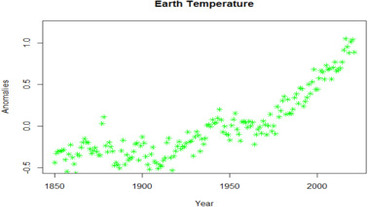
The American healthcare system allocates significantly greater financial resources than other developed nations; however, its health outcomes, particularly life expectancy, remain notably lower. Despite continuous advancements in medical technology and increased spending, the system faces persistent challenges related to cost ef

This study explores the adoption of reusable transit packaging in the U.S. aerospace, machinery, and automotive industries, focusing on current perceptions, barriers, and strategies for broader implementation. Using surveys, interviews, and a literature review, we find that packaging choices are critical for sustainability goals
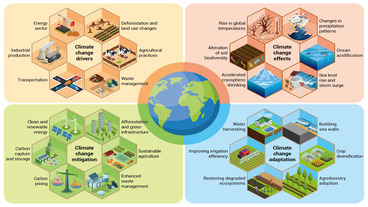
The presentation deals with Higher Education Institutions (HEI) role in climate change (CC) mitigation in relation to other key societal actors. The presentation draws from a book “Higher Education Policy for Tackling Climate Change – Drivers, Dynamics and Effects” (Palgrave MacMillan, 2025), edited by Jouni Kekäle and R�

China has officially proposed to achieve the target of carbon peak by 2030 and carbon neutrality by 2060, imposing substantial pressure on the transformation of the energy structure. In this study, we propose a multi-objective optimization model for the non-fossil energy structure, encompassing three primary optimization objecti
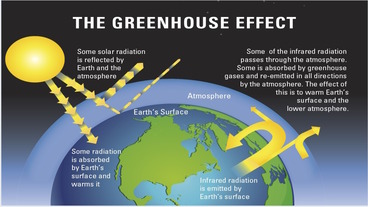
Climate Change increases the mean global temperature of the earth’s surface (MGT). According to the National Oceanic and Atmospheric Administration (NOOA)’s 2023 Report, the MGT has increased at an average rate of 0.06 0 C per decade in the time span 1850 – 1981, but since 1982, the rate of warming with 0.20 0 C per
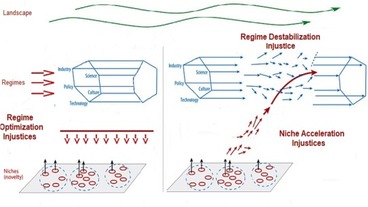
Energy transitions have significant implications for justice, as certain regions may experience losses or improvements as a result of decarbonization efforts. The biogas development in Brazil and Italy has been characterized by incidents of injustice in different dimensions and contexts. This article addresses this issue by appl
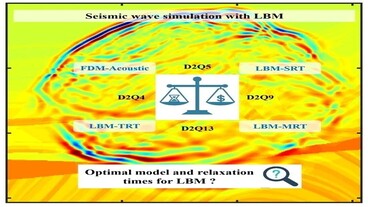
Seismic wave propagation in fluid-solid coupled media is currently a popular topic. However, traditional wave equation-based simulation methods have limitations when dealing with complex fluid-solid boundaries. To address this challenge, we proposed a novel numerical scheme that integrates the lattice Boltzmann method (LBM) and
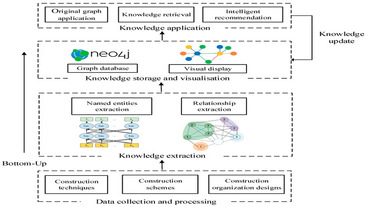
Addressing climate change with the urgency it demands requires innovative tools to support evidence-based policymaking. This study presents a knowledge management system that utilizes a semantic knowledge graph to improve access to and comprehension of the Summary for Policymakers (SPM) from the Intergovernmental Panel on Climat

Traditional journalism frowns upon the use of literary devices and styles to convey information to the public. However, the journalistic style is sometimes too dry to engage an audience. Should we expand environmental journalism to include genres such as the personal essay and literary devices including anthropomorphism or the p

